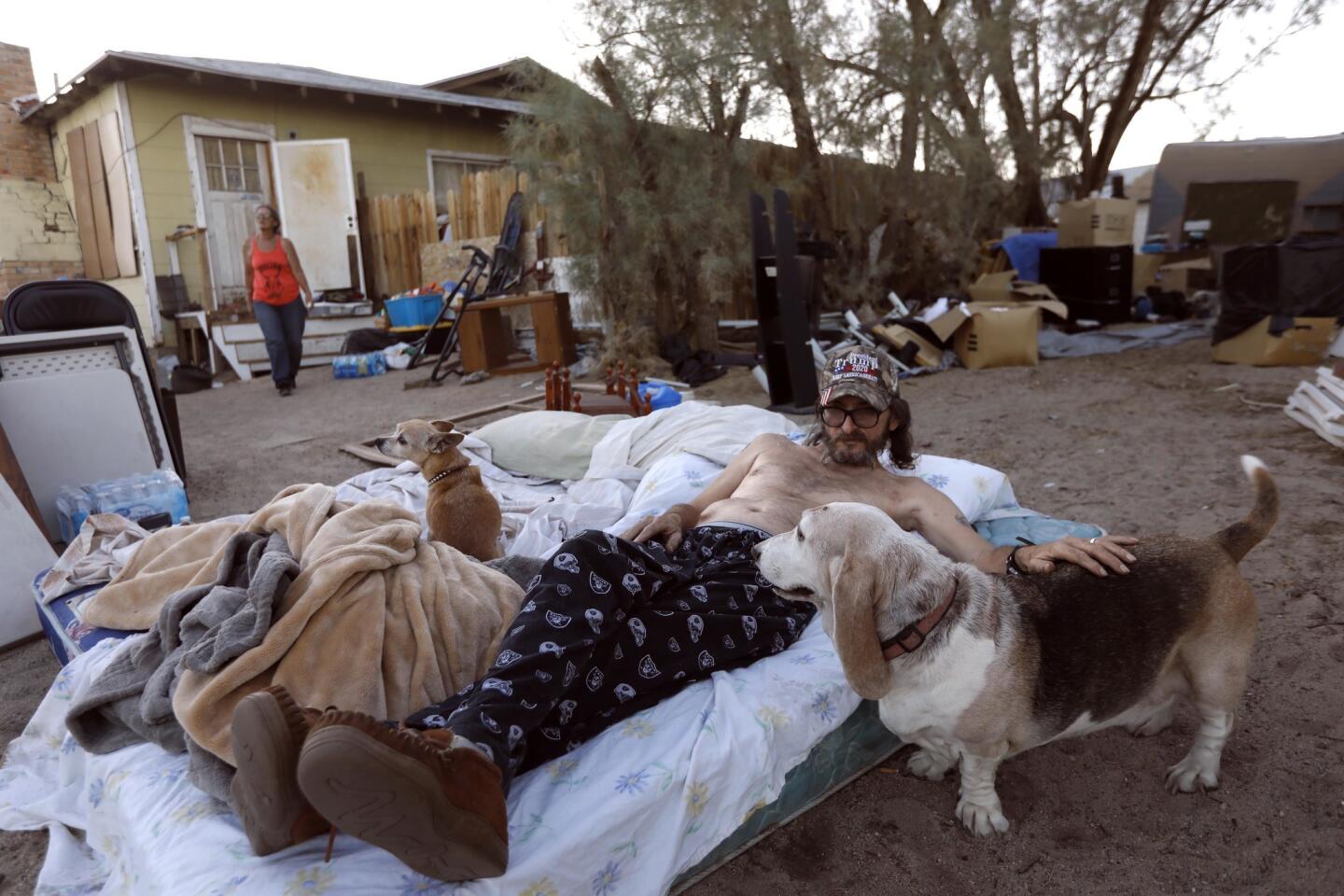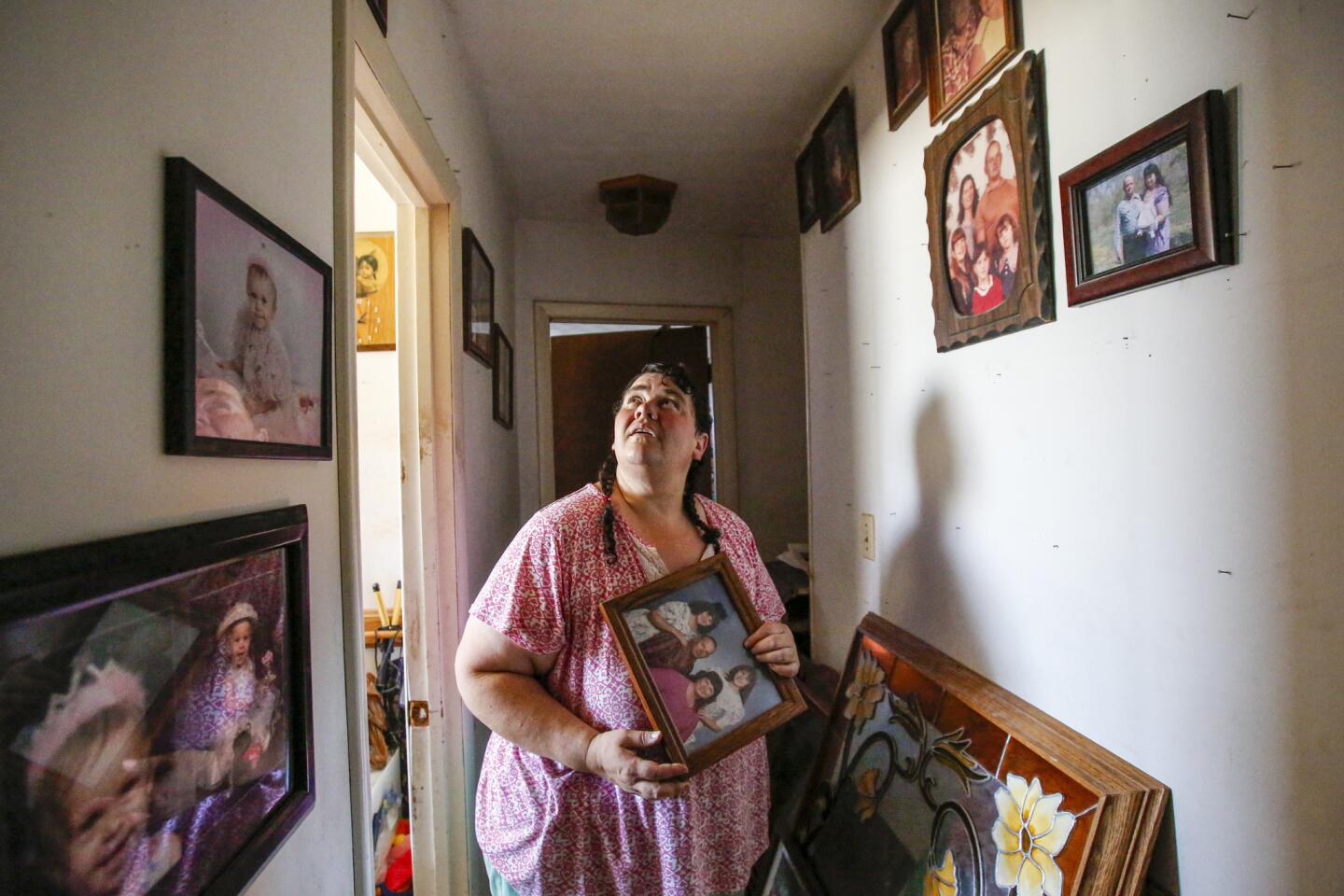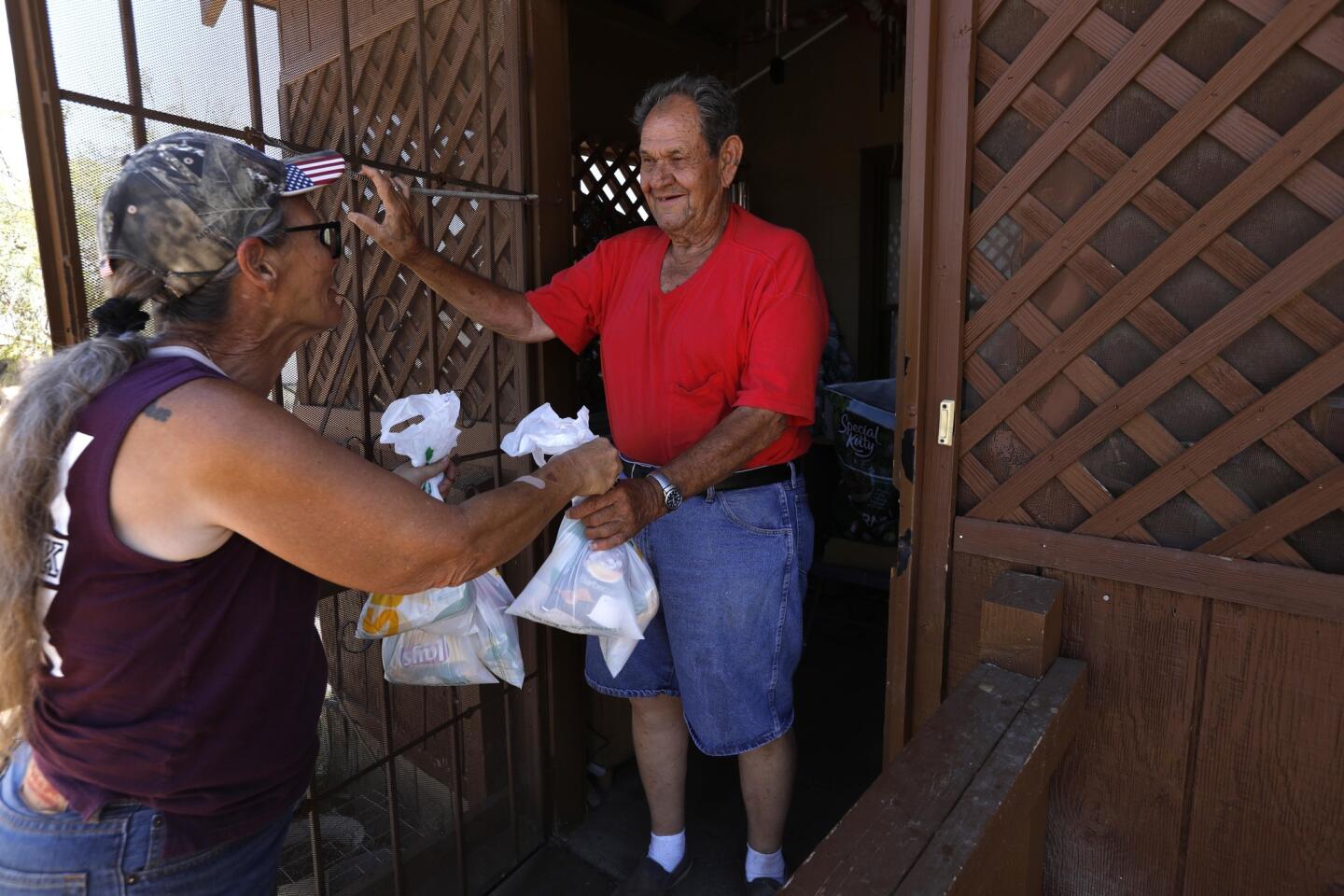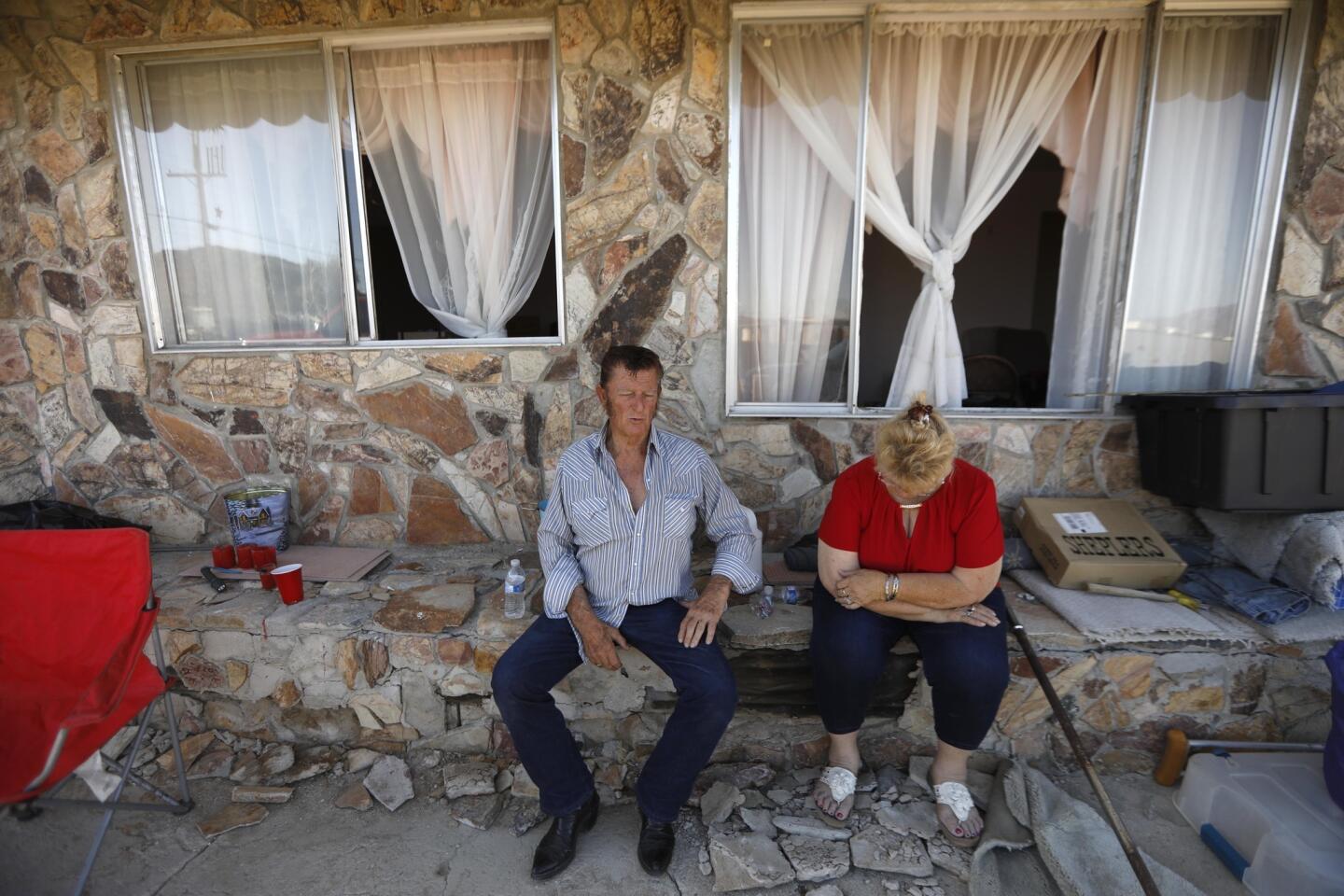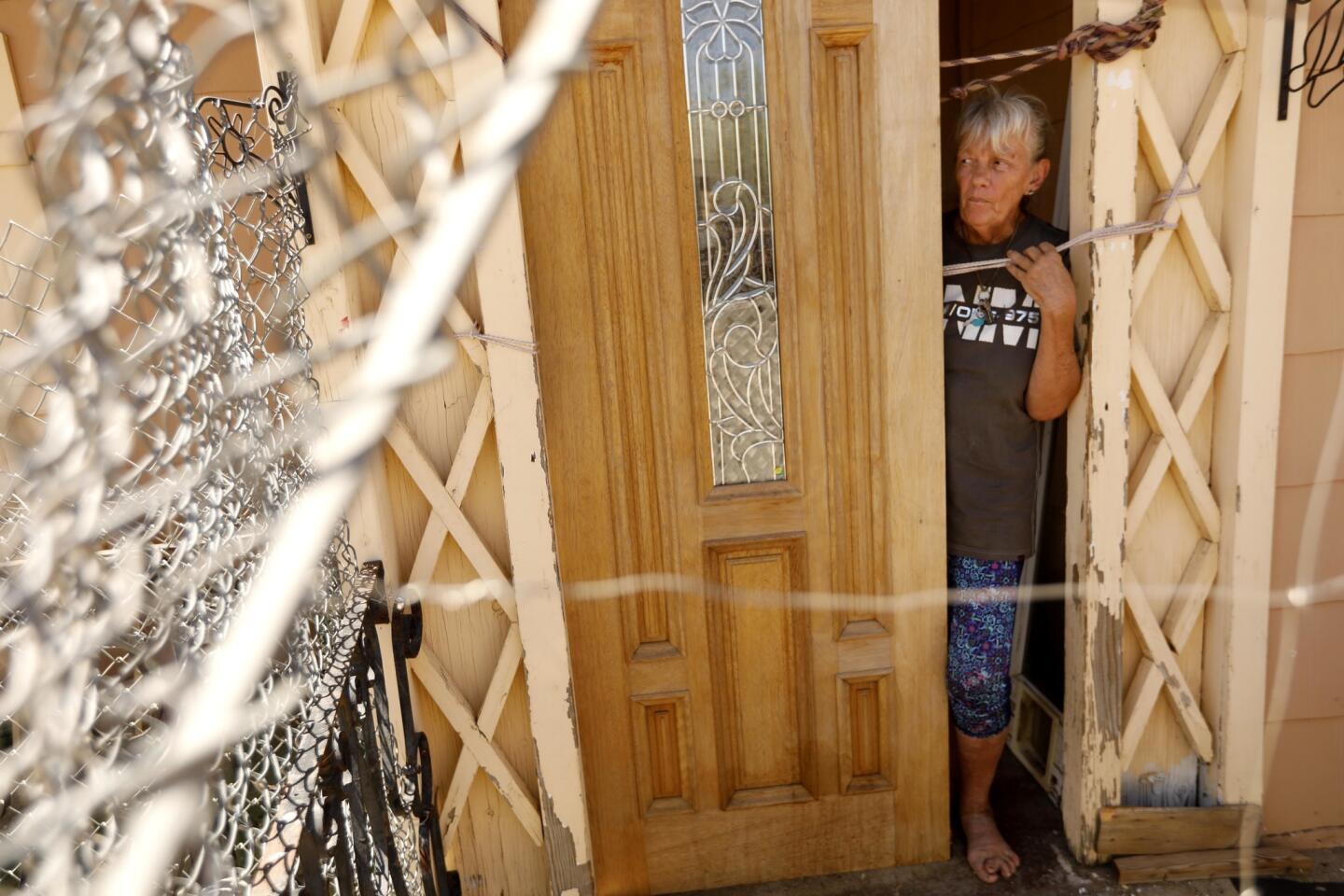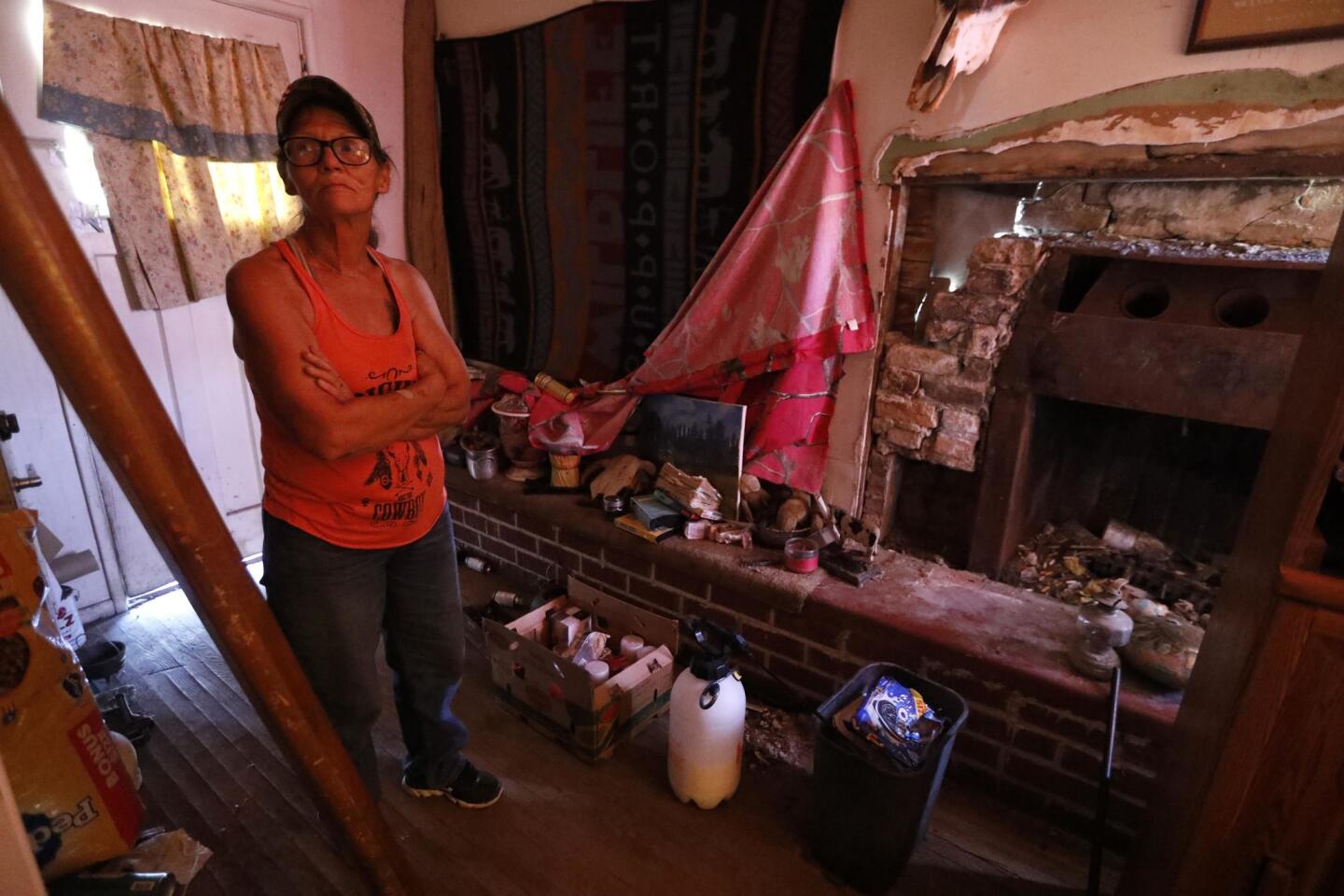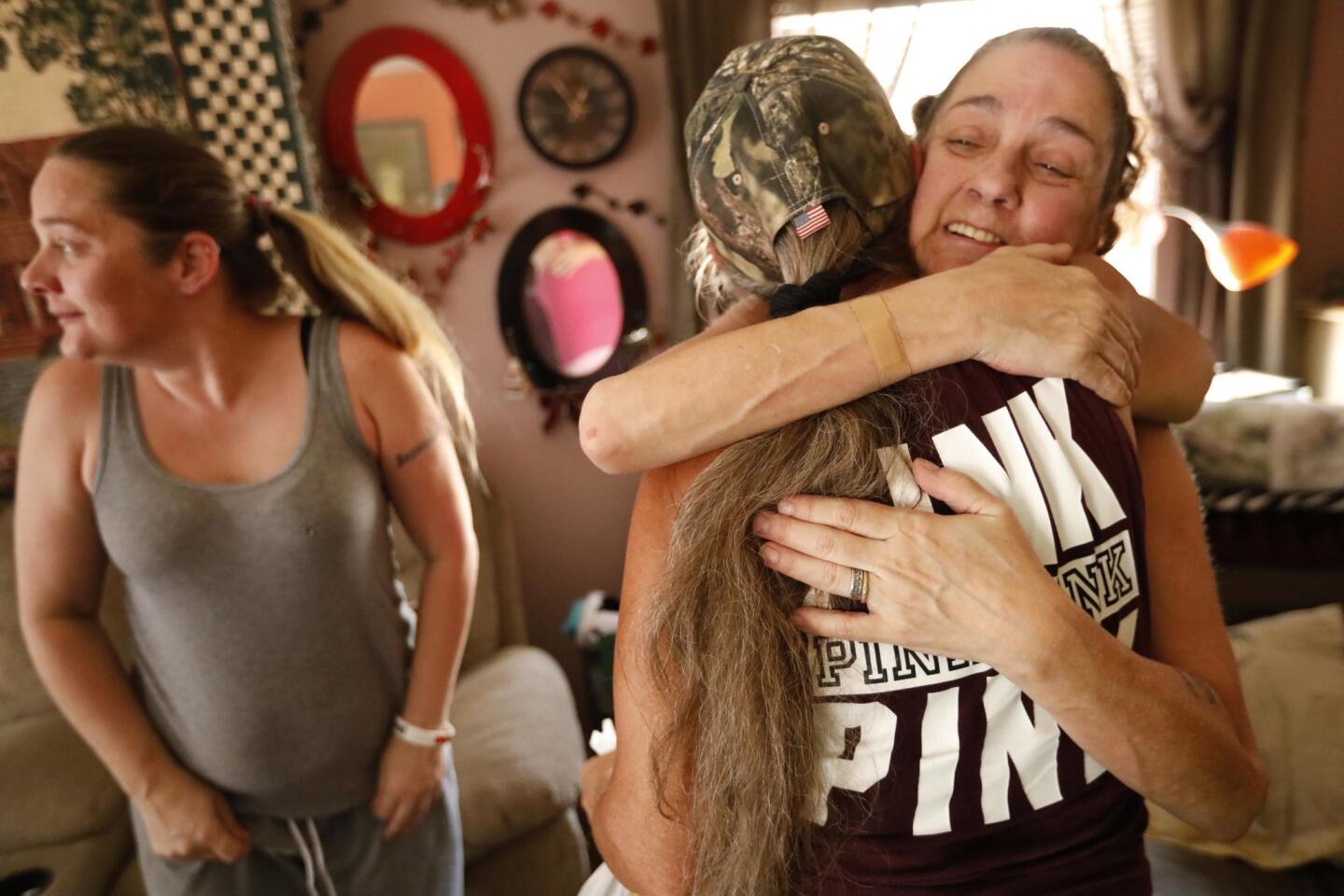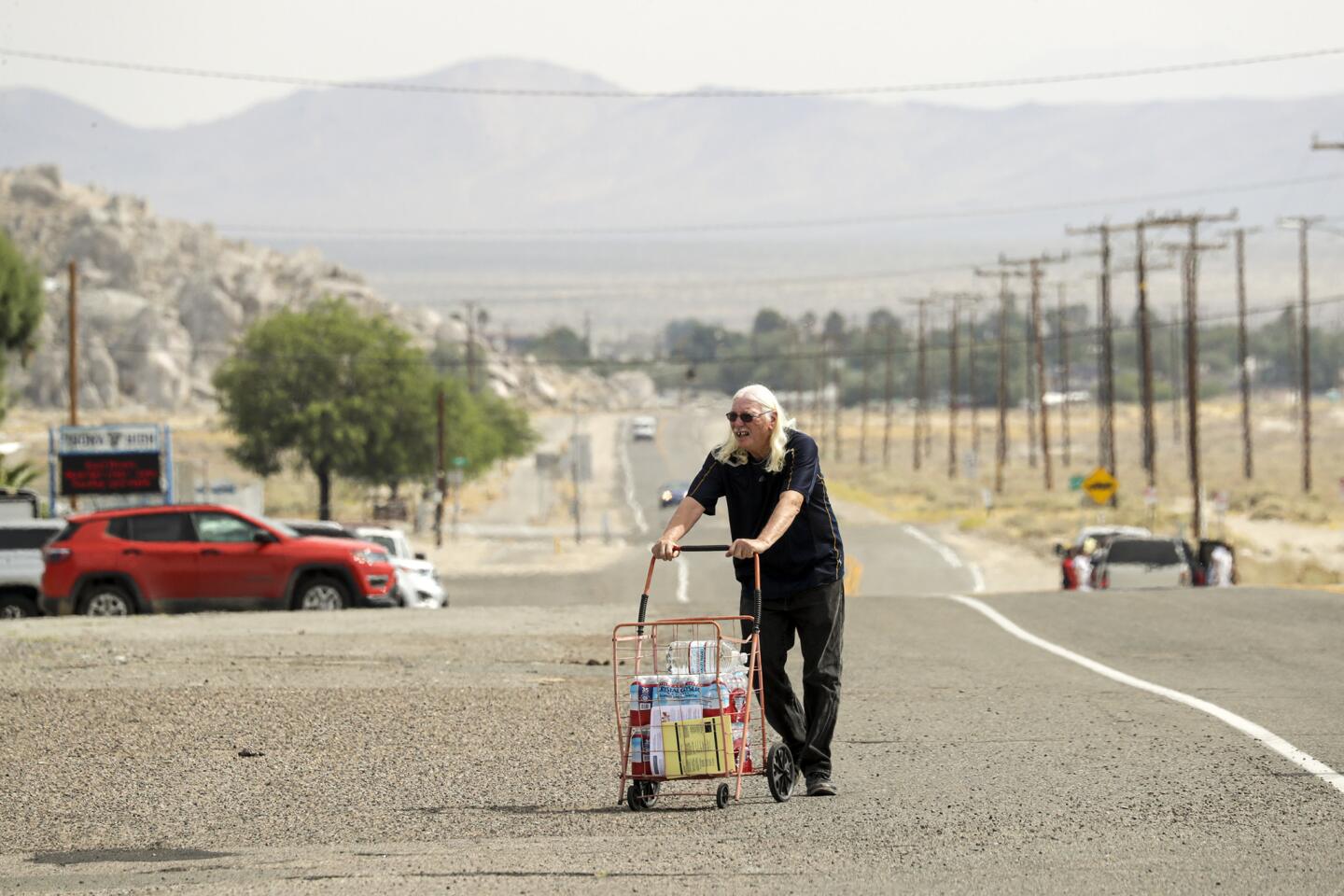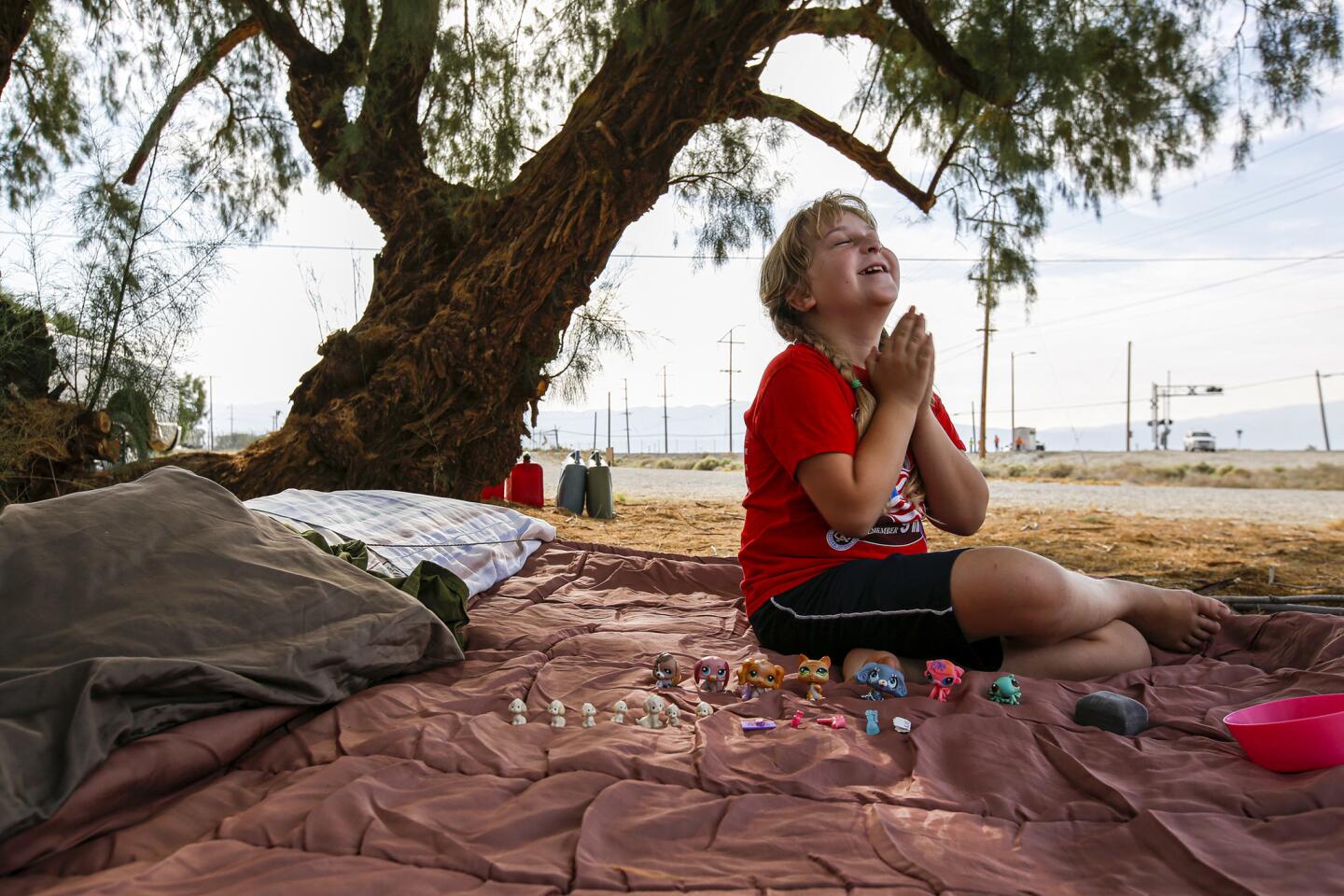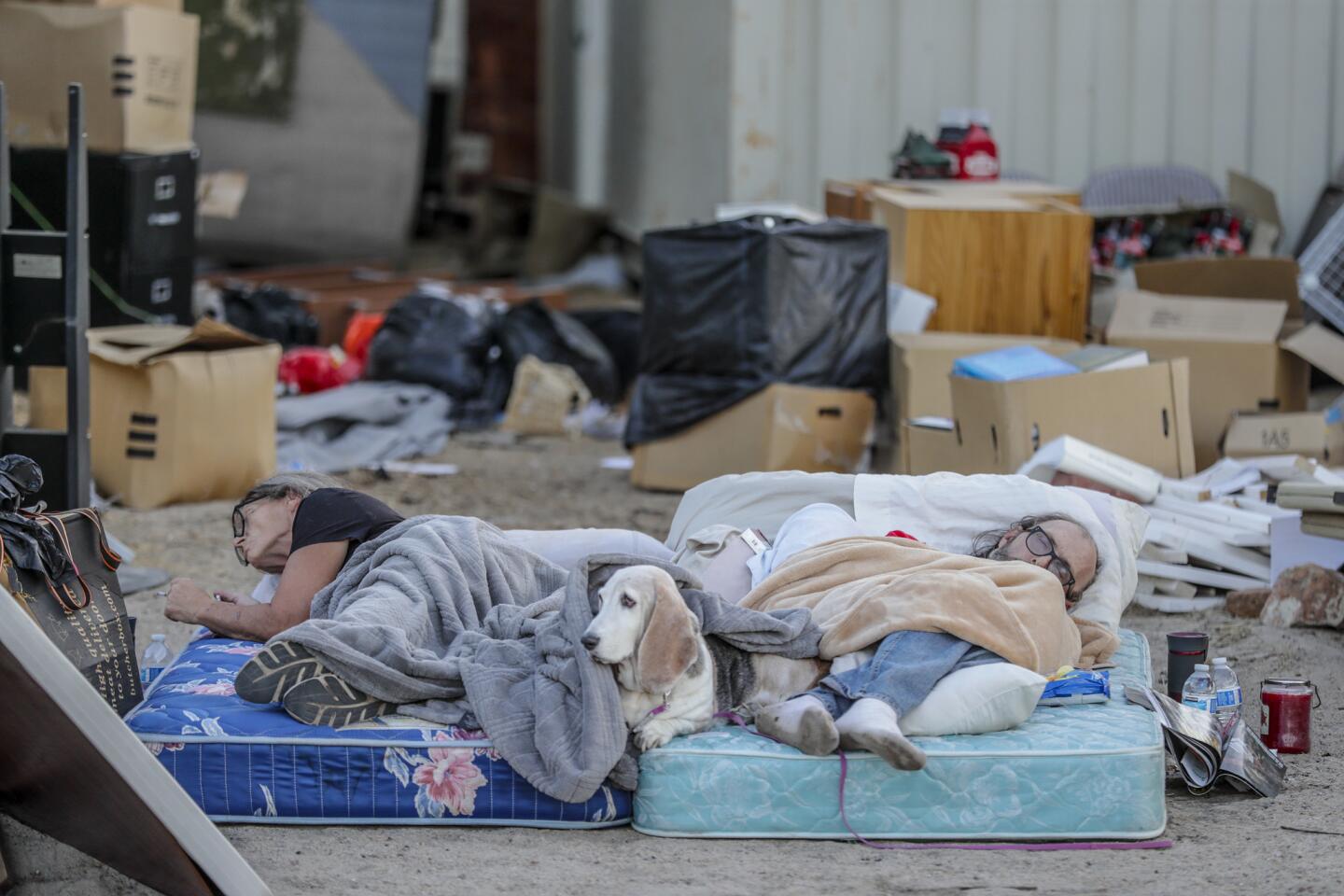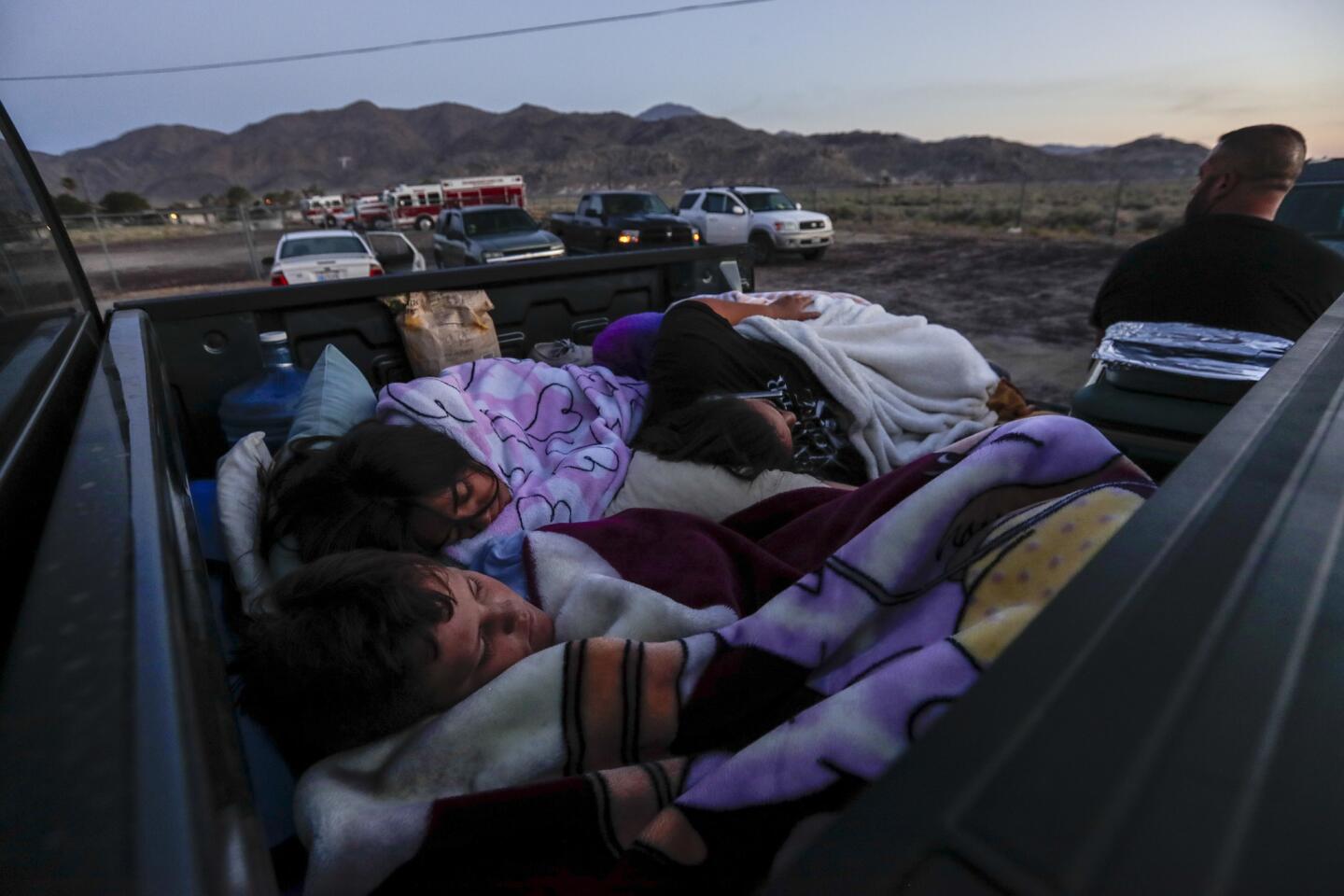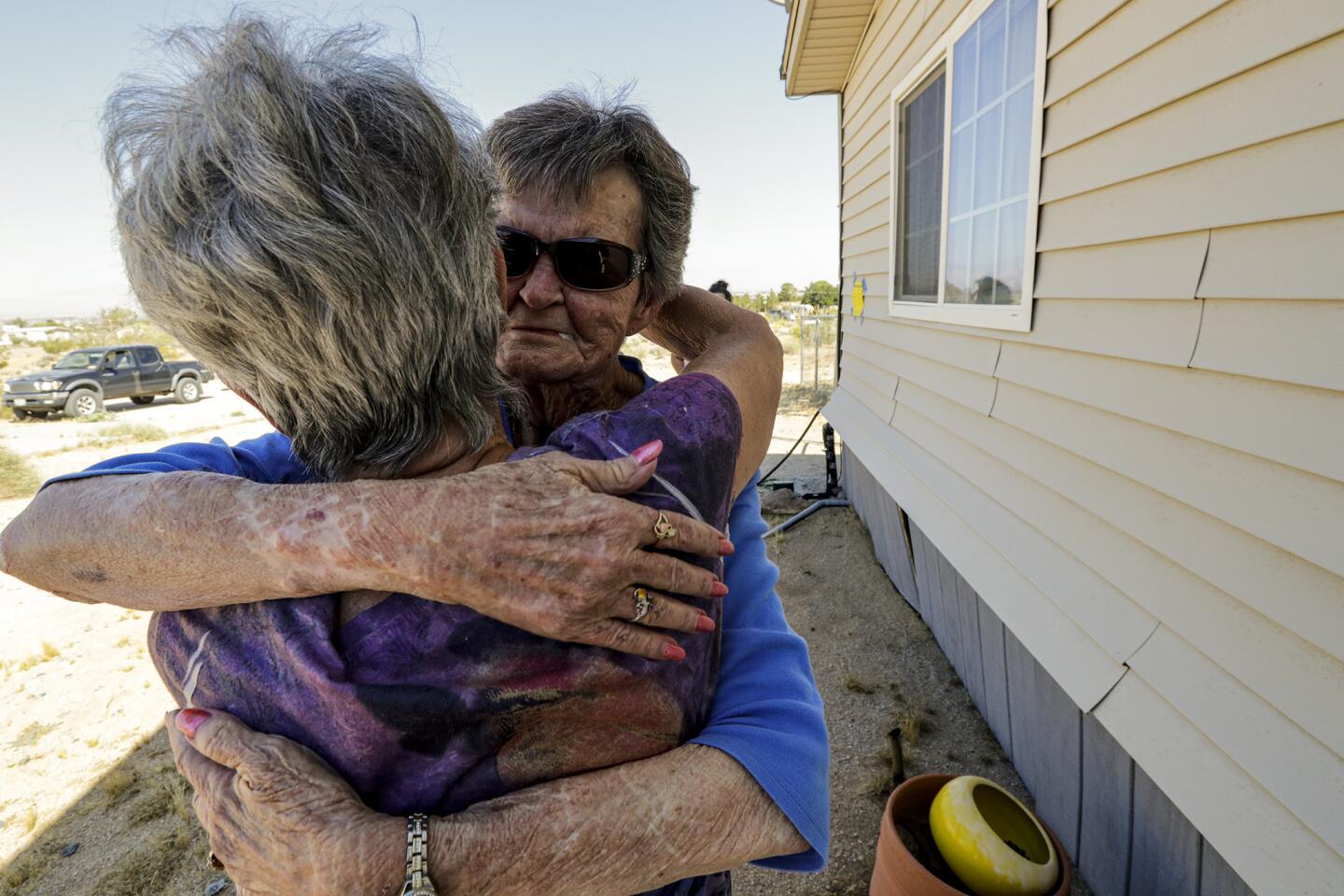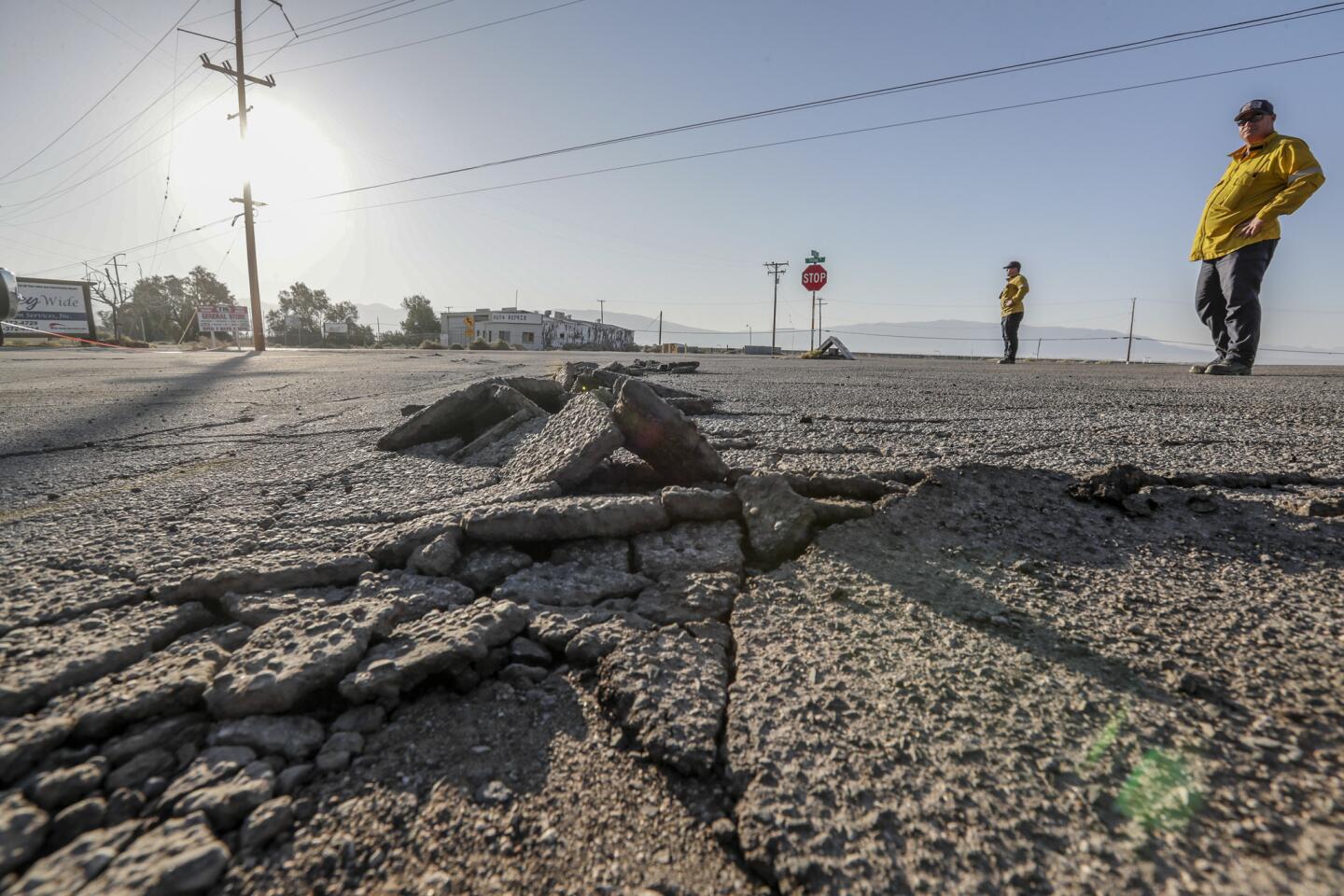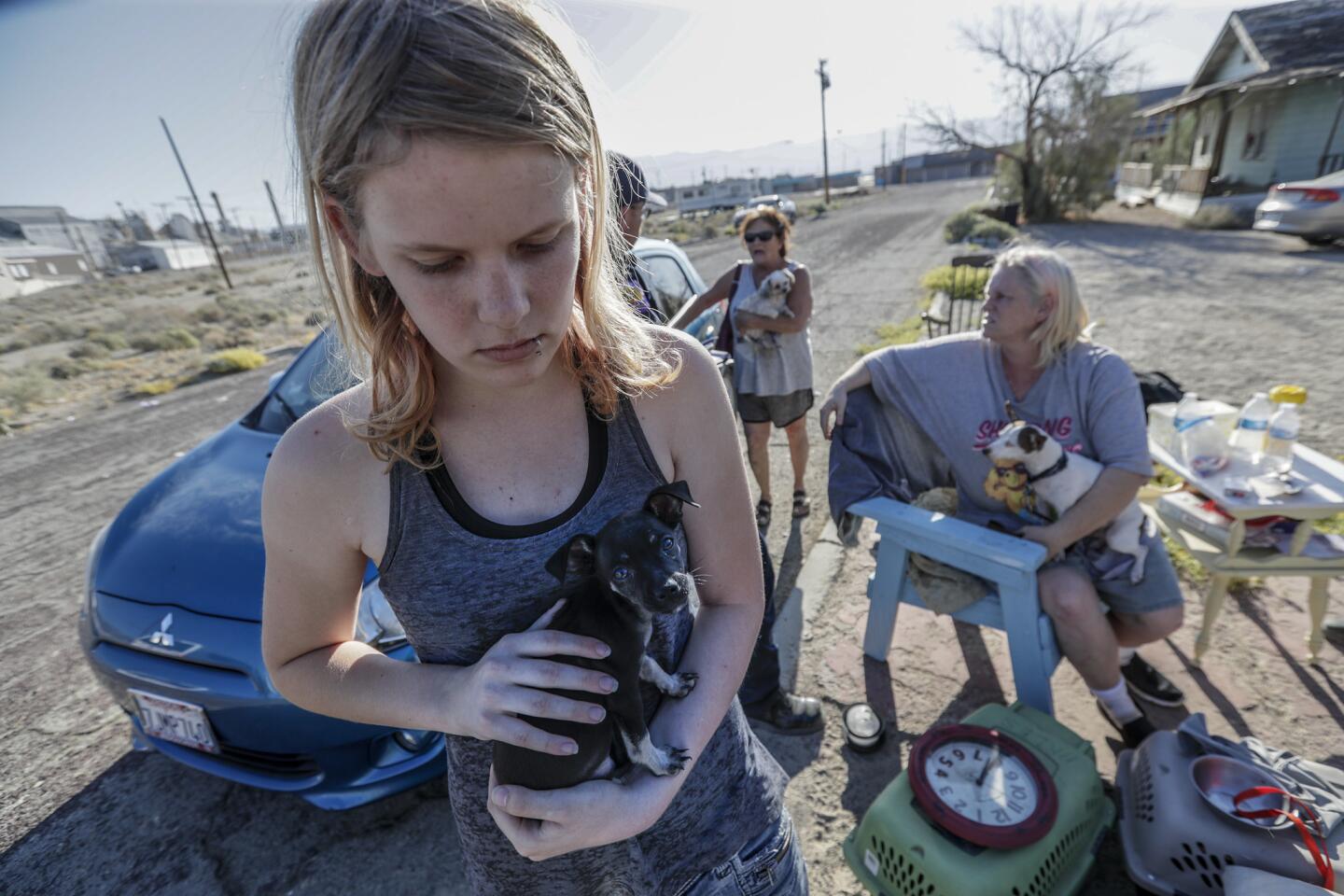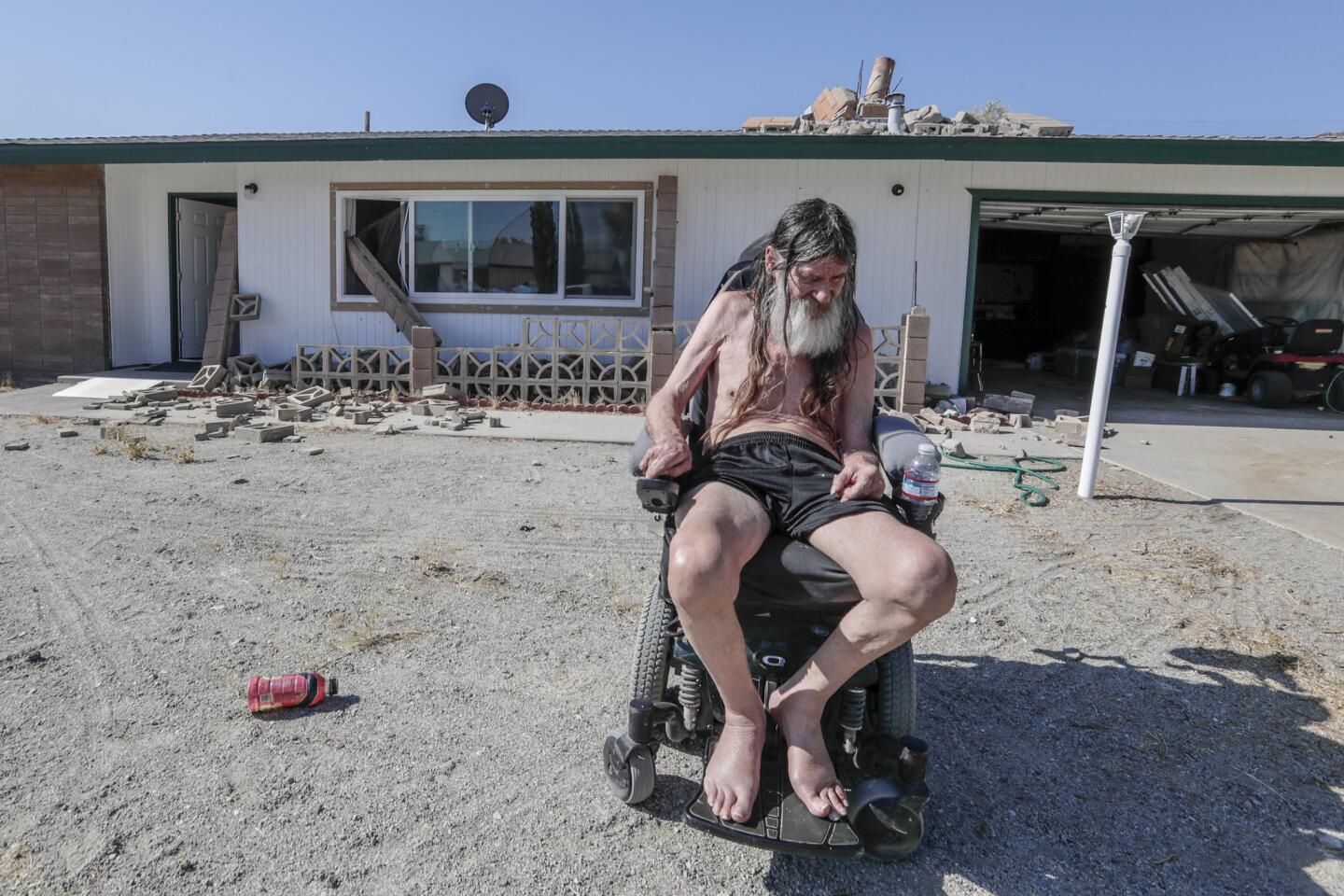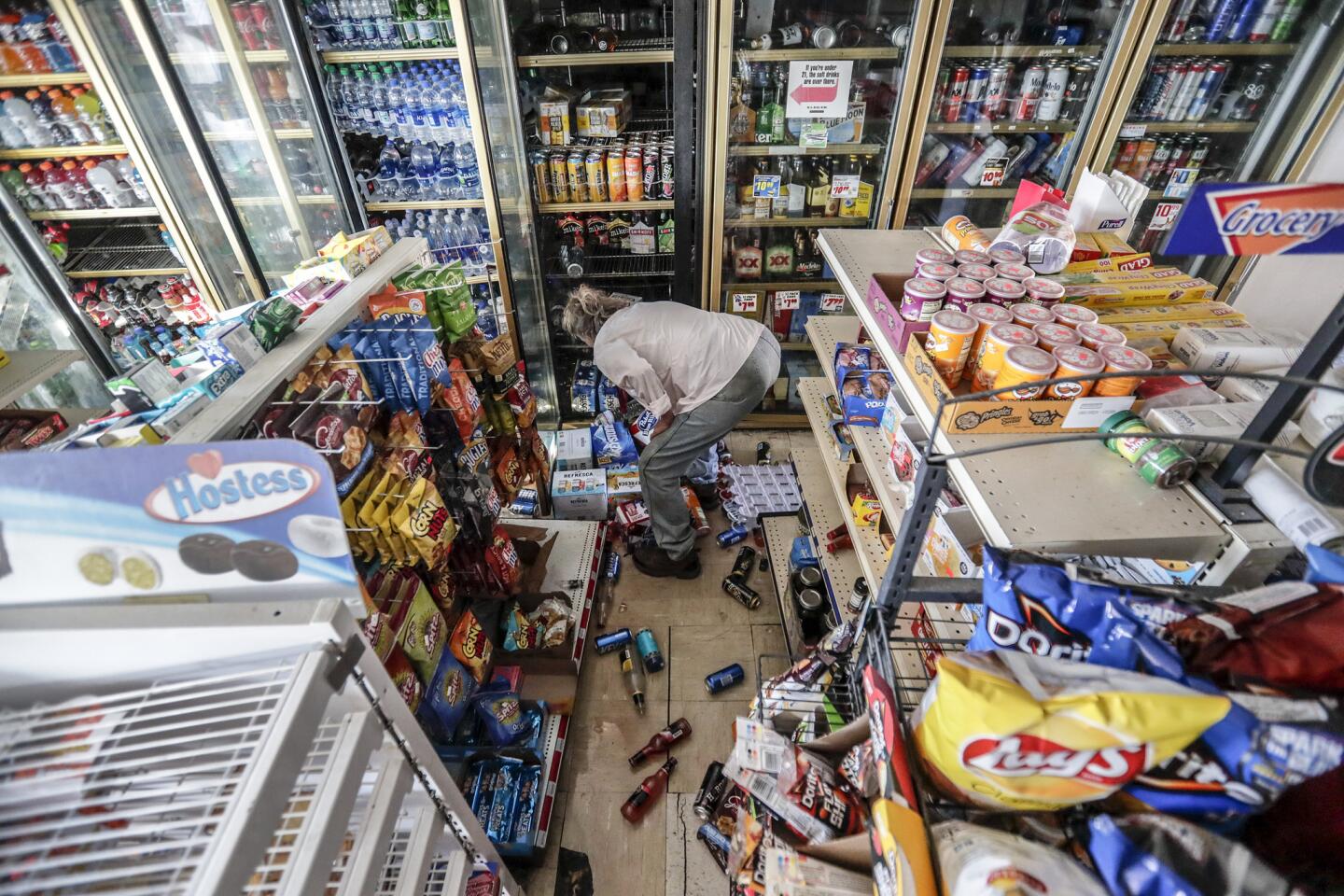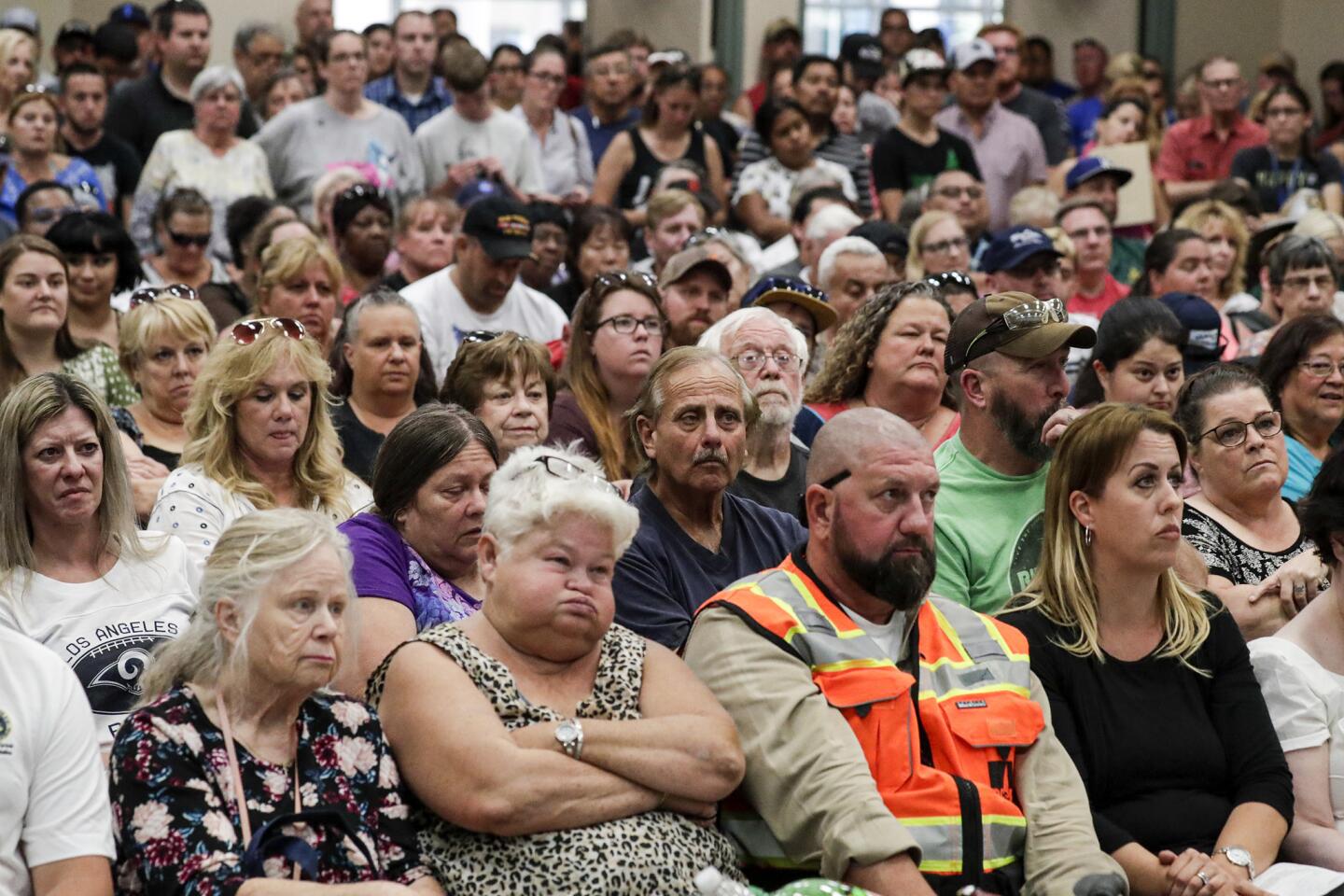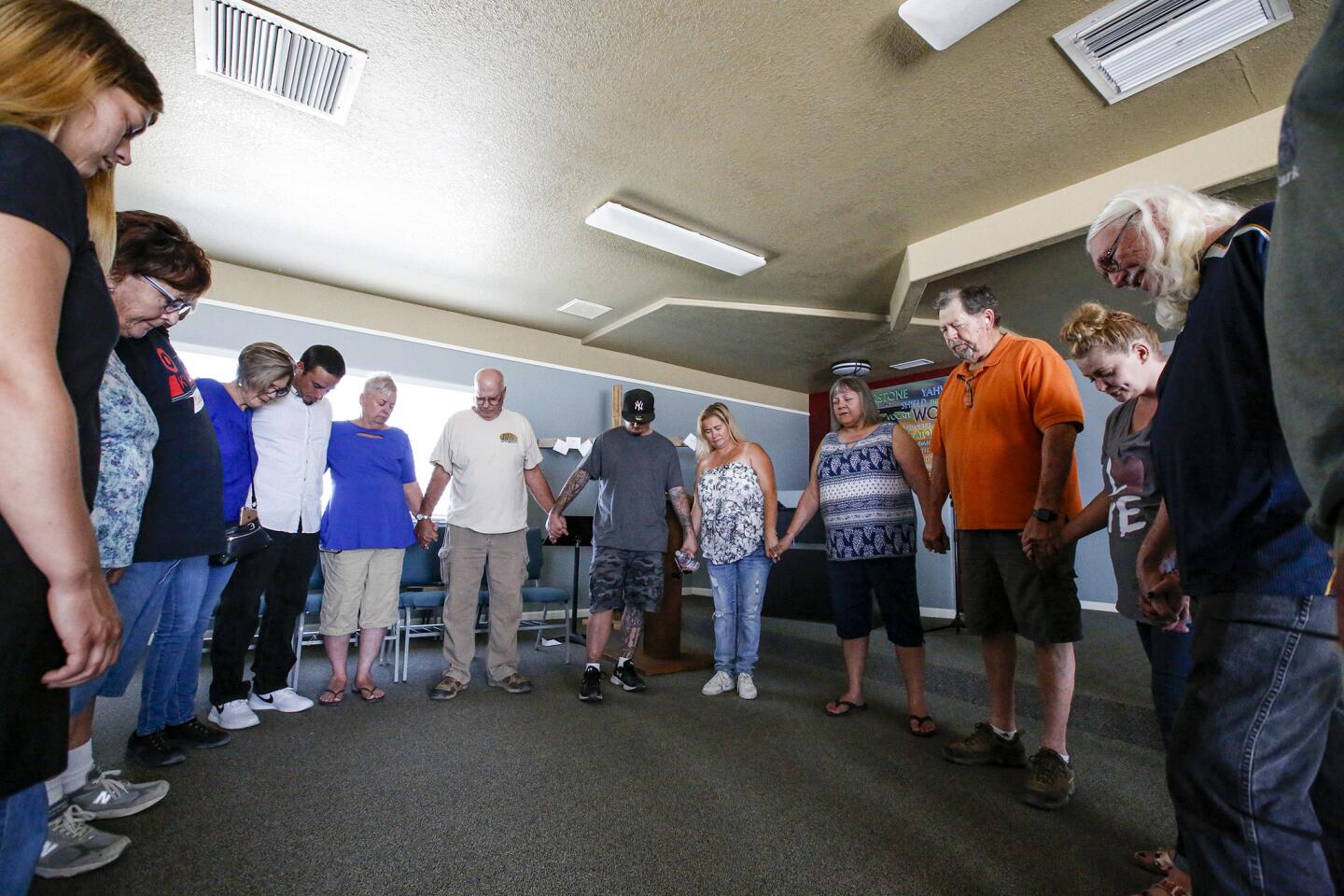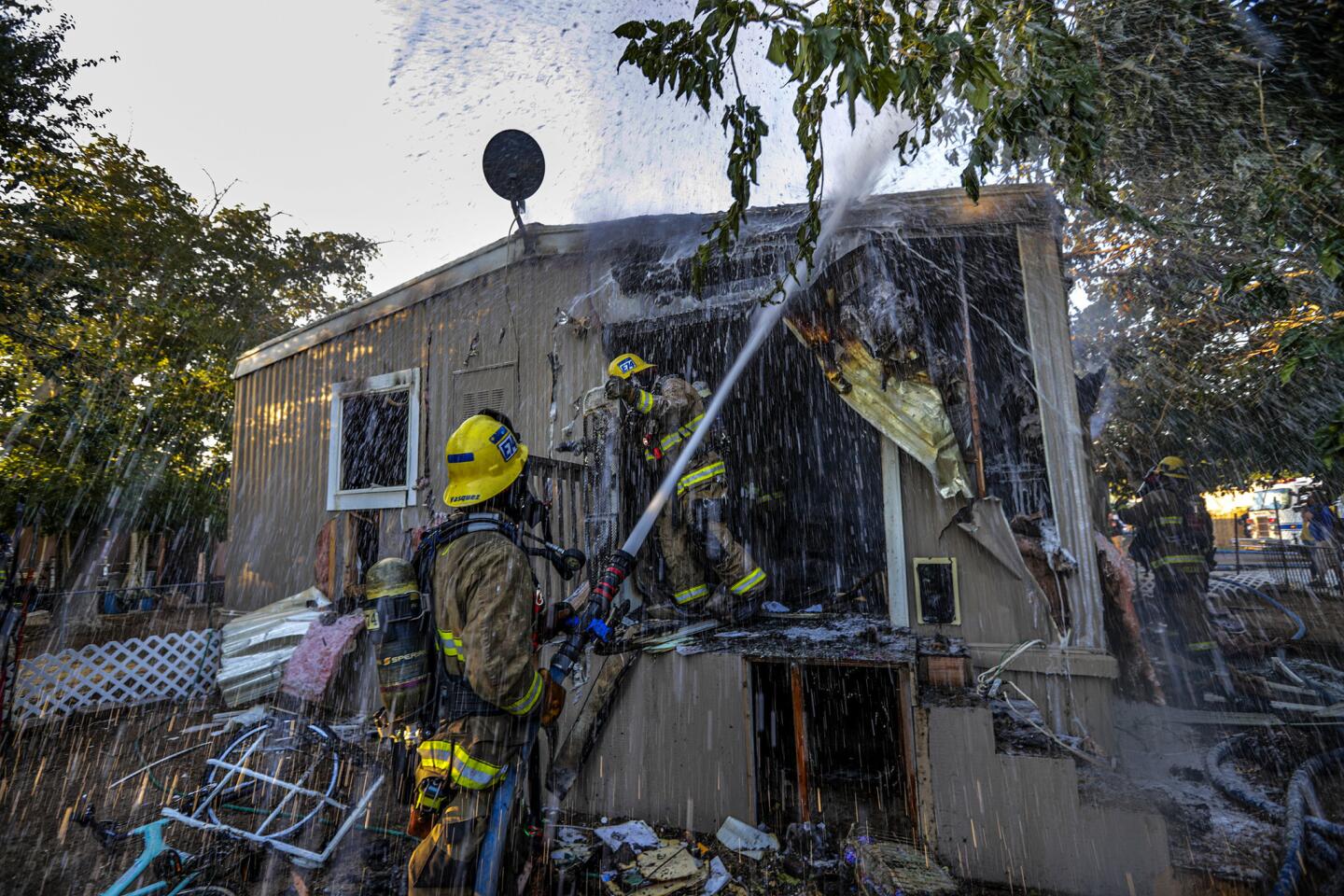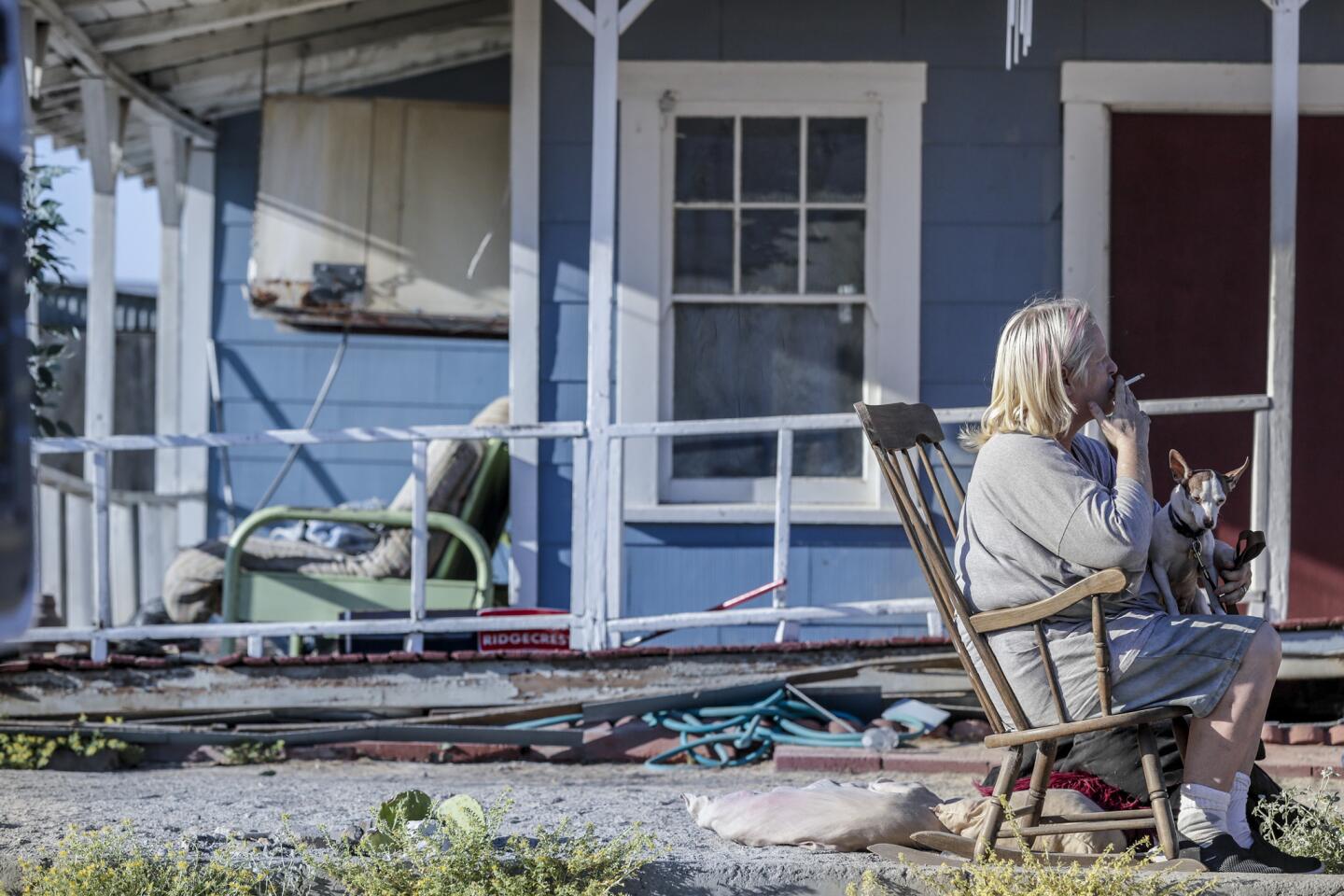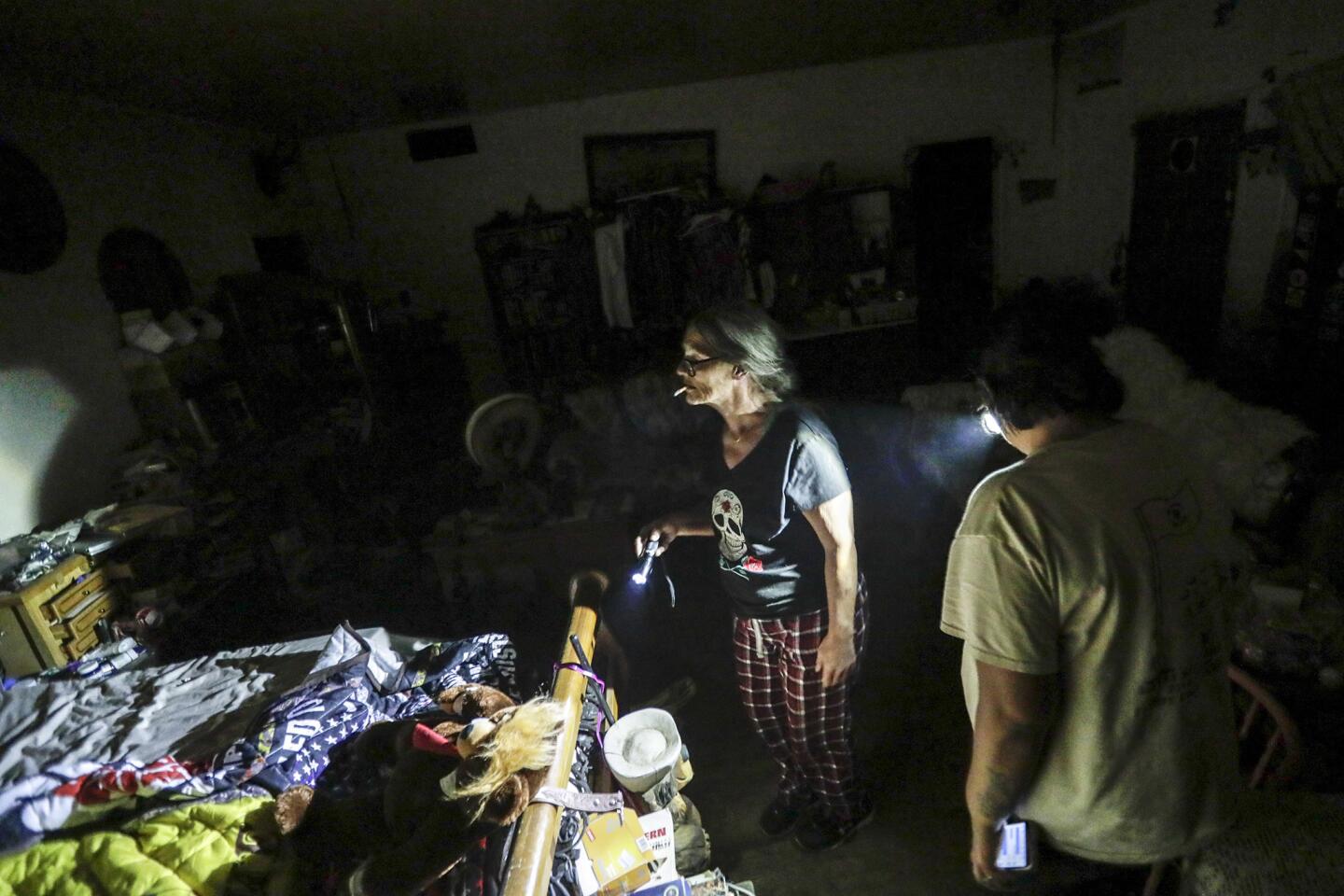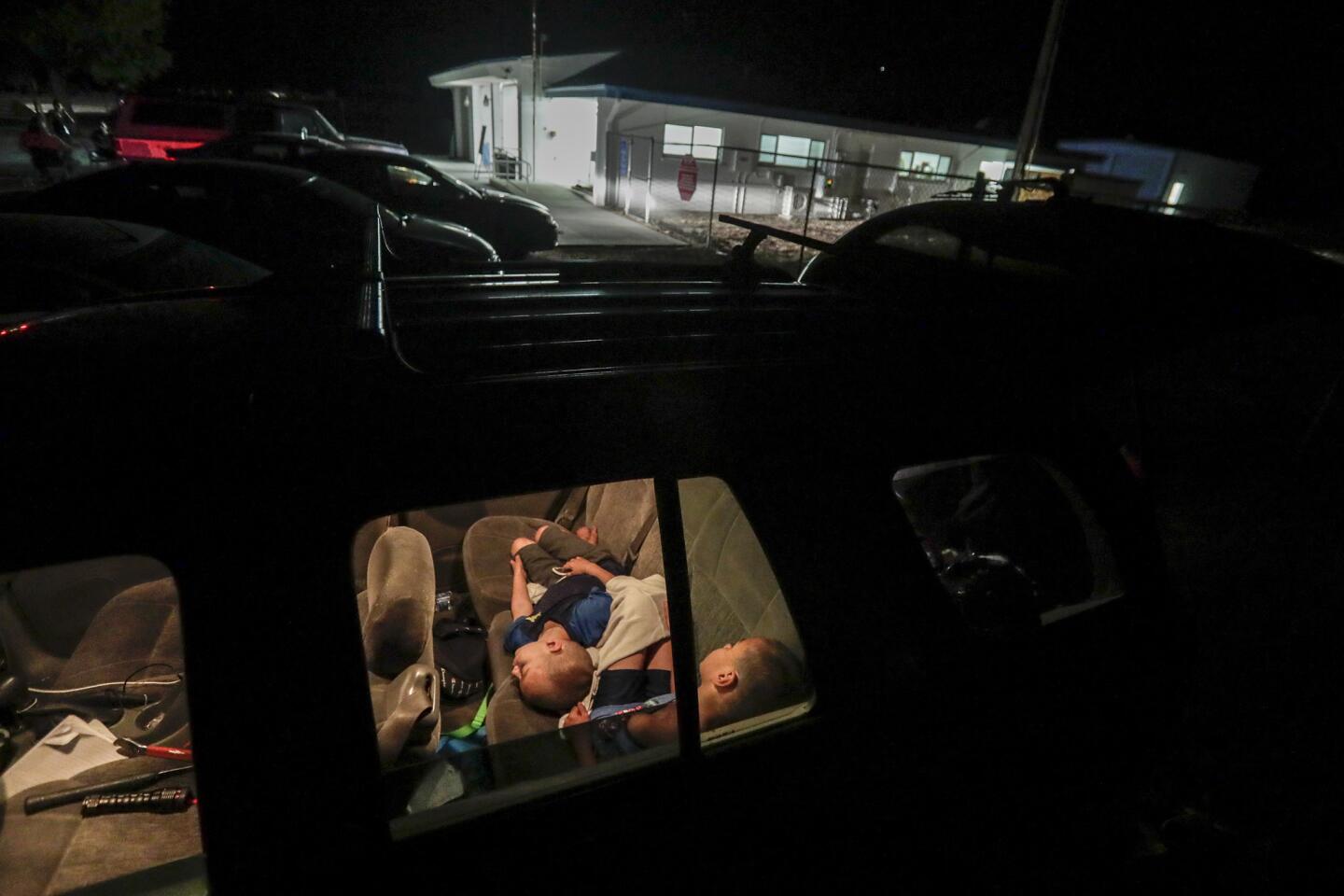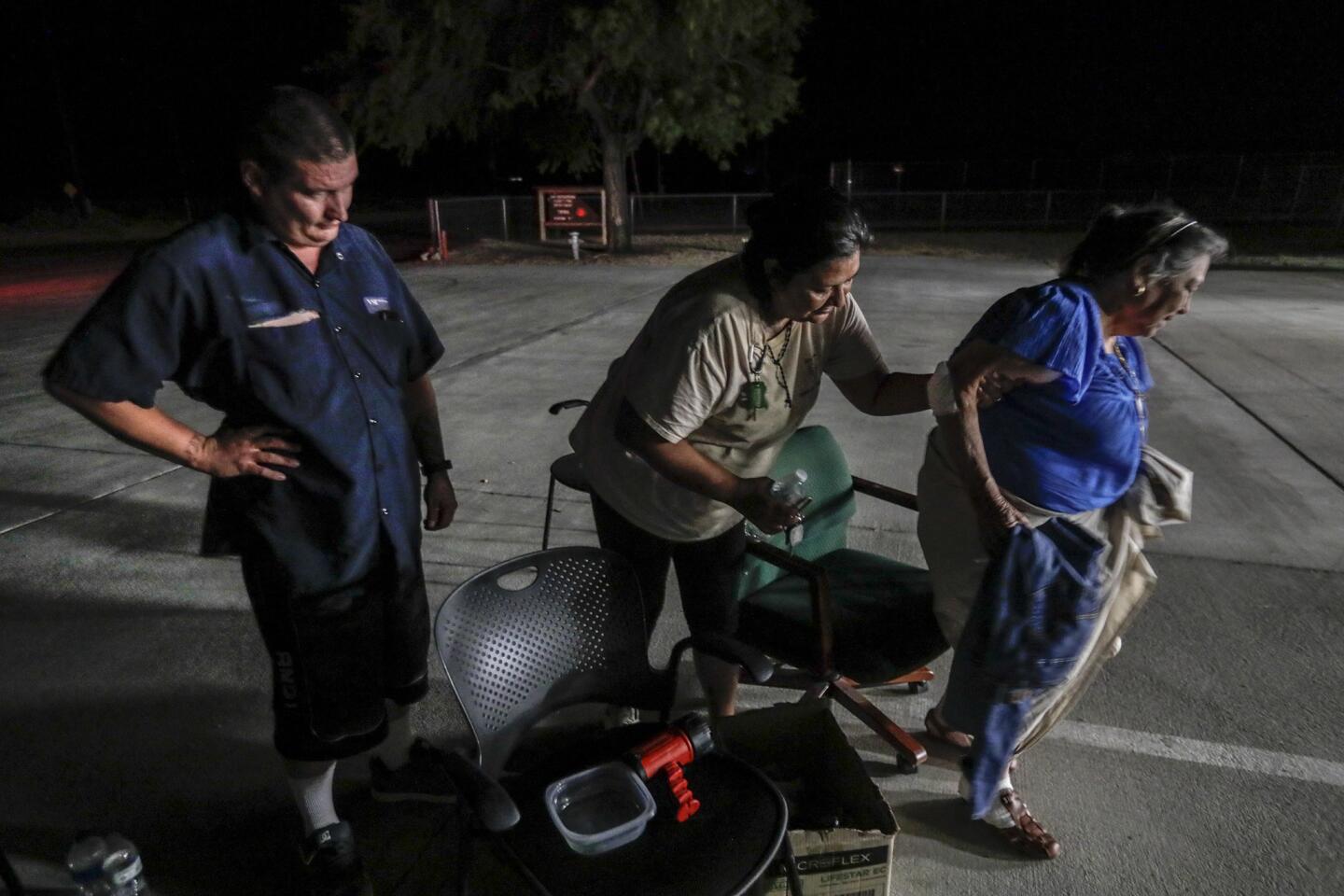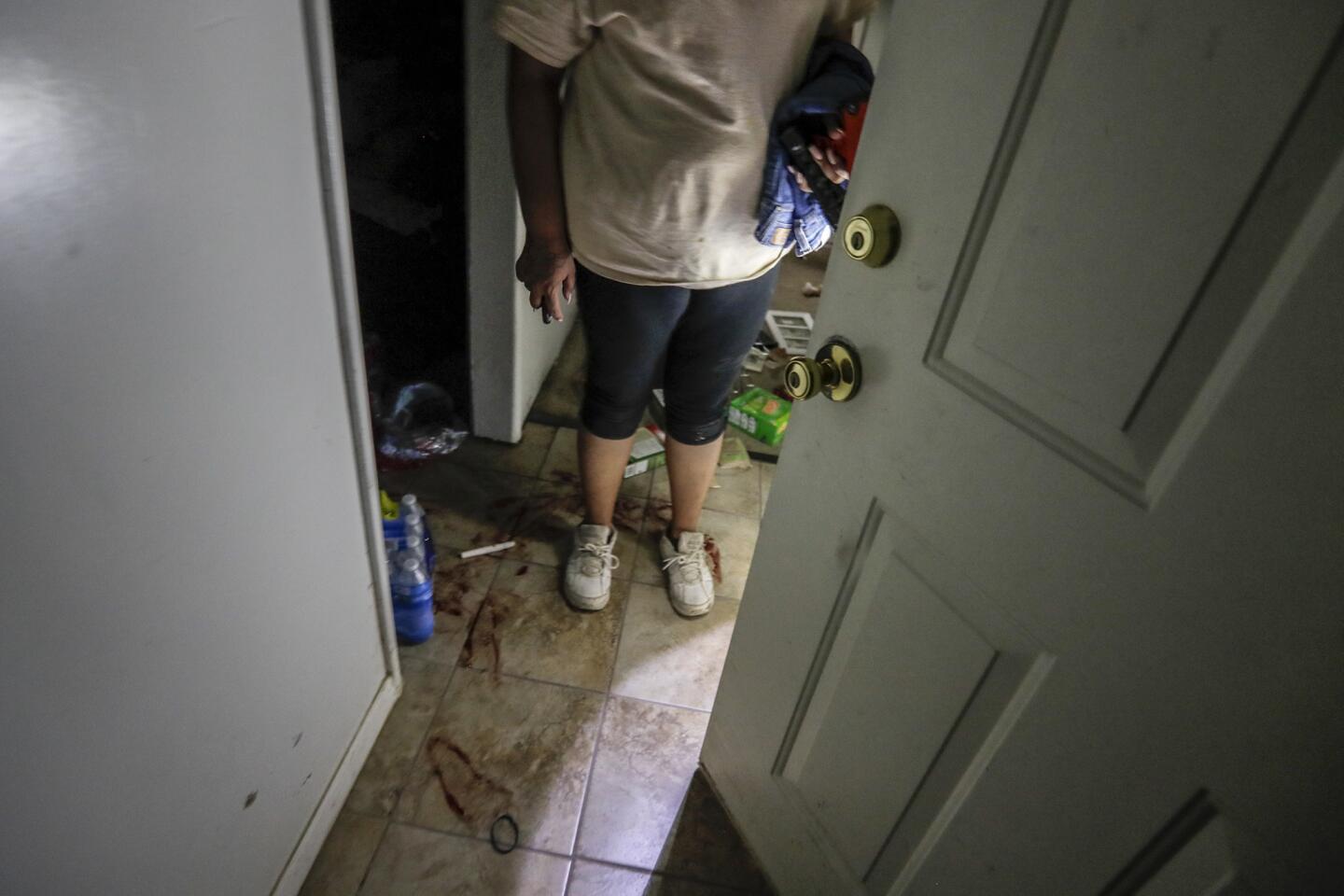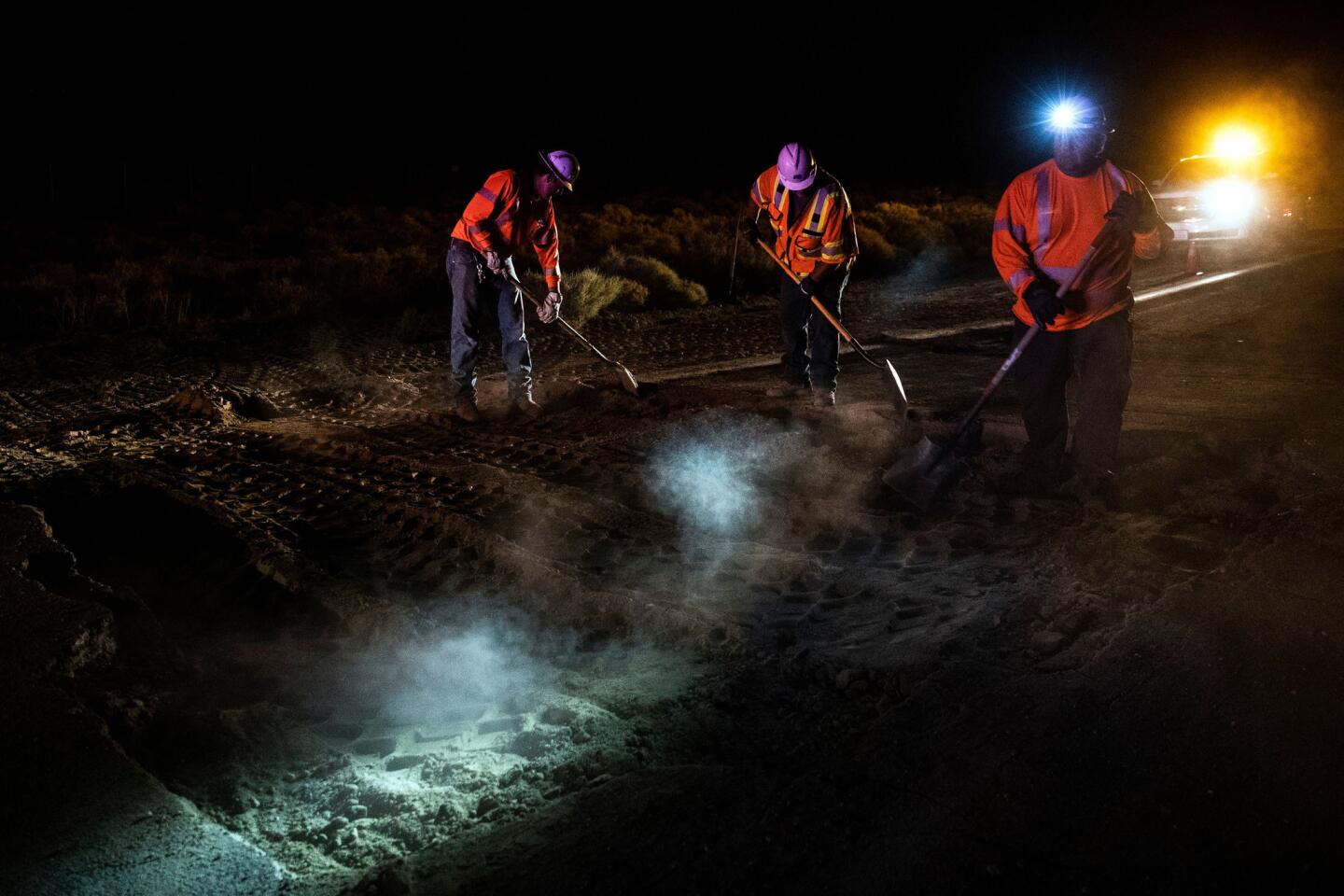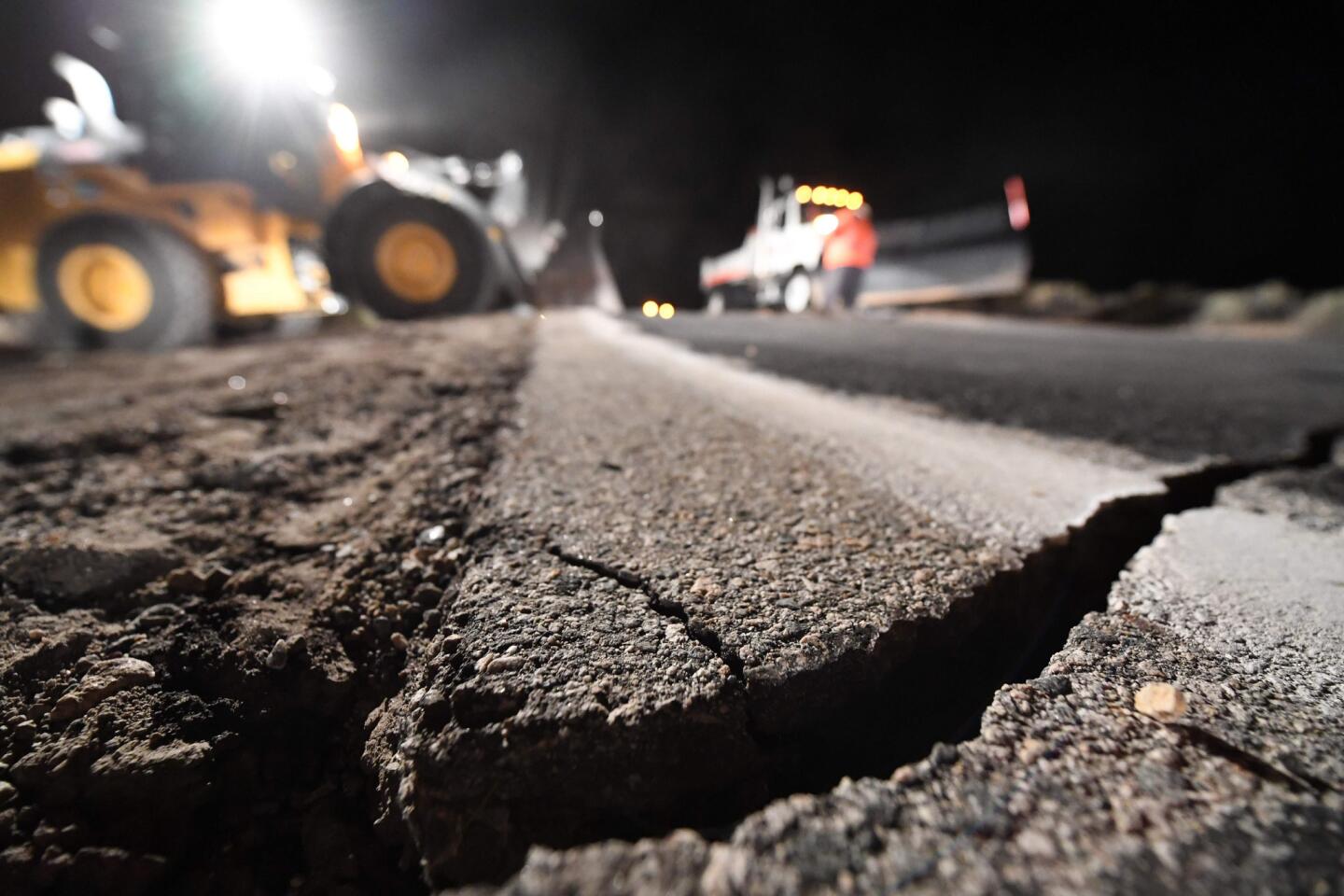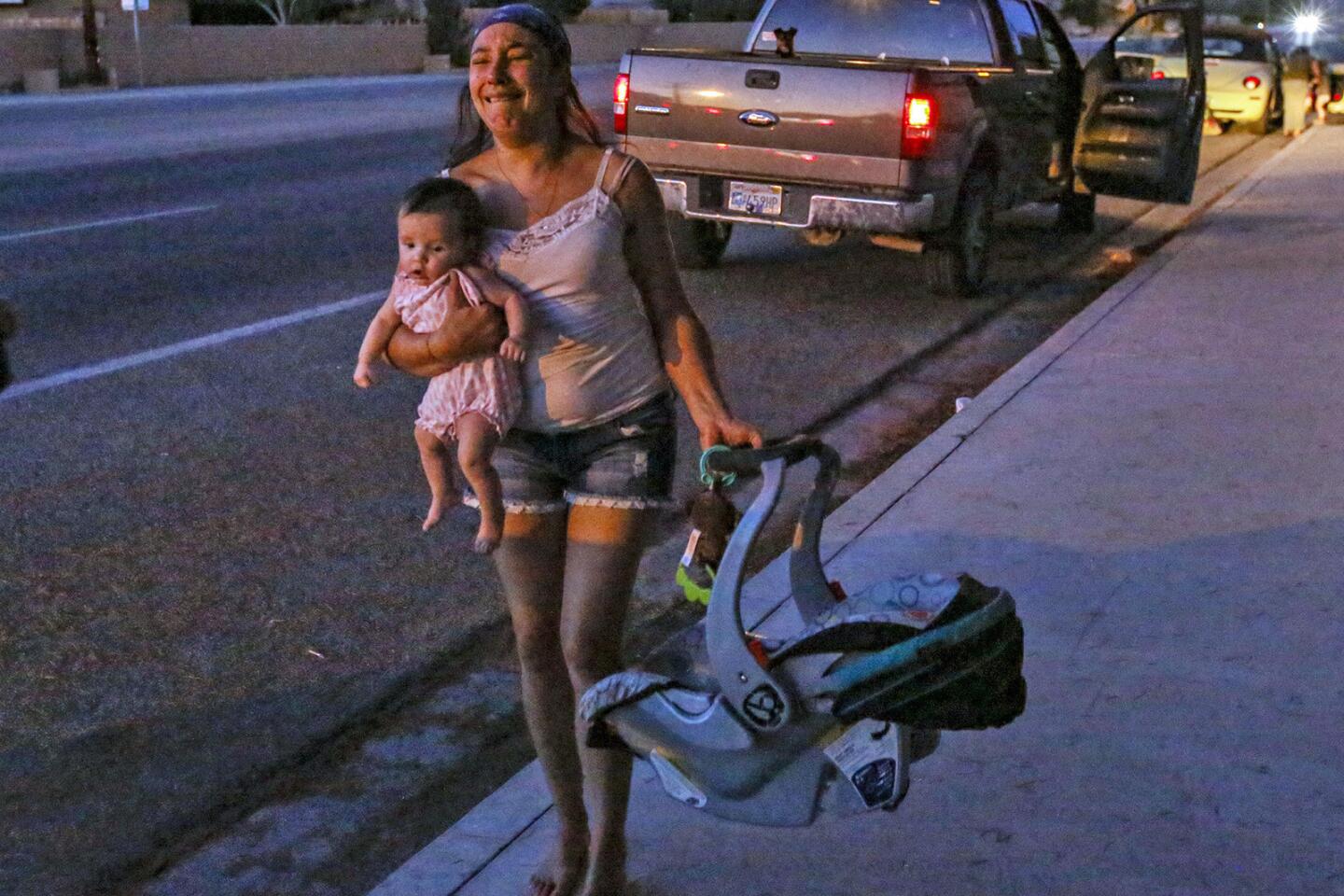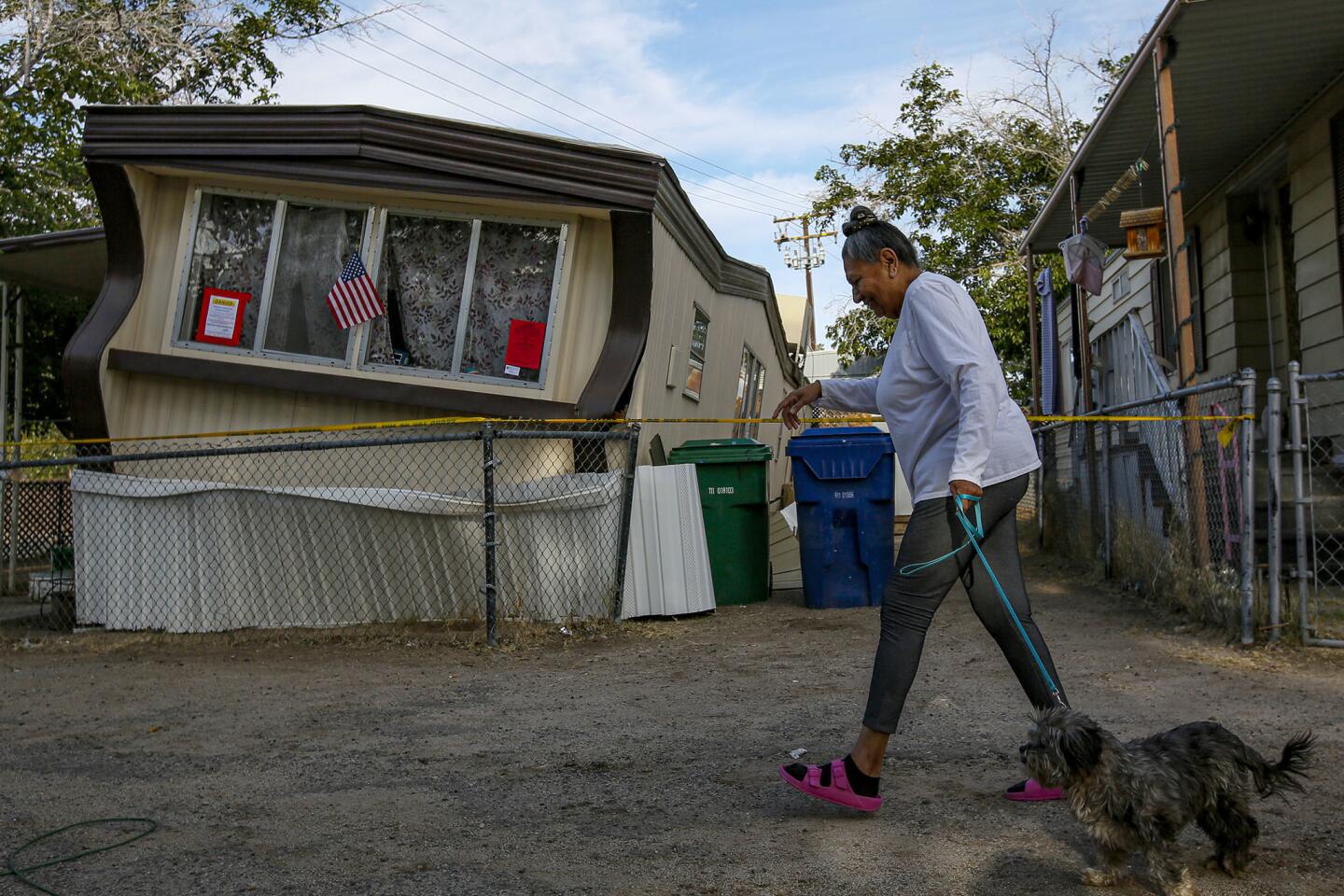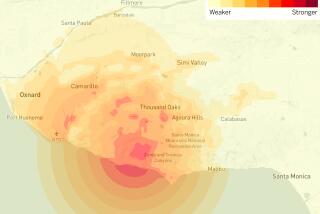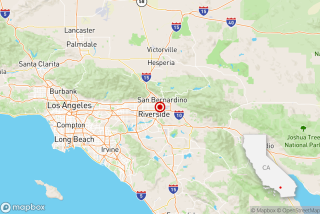Damage to homes, but no deaths reported, in 7.1 magnitude California earthquake
The 7.1 magnitude earthquake that rocked Southern California on Friday night tipped buildings off their foundations and left residents on edge but did not cause any fatalities or major injuries, officials said.
California’s second major earthquake in less than two days struck near Ridgecrest, a Mojave Desert town about 125 miles northeast of Los Angeles. The same area was rattled by a magnitude 6.4 earthquake, the largest in nearly two decades, on the morning of July Fourth.
“By the grace of God, we’ve had no casualties, and we’ve only had minor injuries,” said Jed McLaughlin, the Ridgecrest police chief. That outcome, he said, “is amazing, considering these two big earthquakes that we’ve experienced.”
Earthquake preparedness: What to do before - and during - a big one »
The Friday night earthquake was about 10 times larger than the July Fourth quake, seismologists said. Shaking was felt as far away as Phoenix, Las Vegas, Baja California and Reno, according to crowd-sourced data on the U.S. Geological Survey.
Power and communication were knocked out to Ridgecrest and the nearby town of Trona overnight. Some buildings sustained major damage, but the immediate extent was not clear.
The earthquake sparked several gas leaks and four fires, destroying several mobile homes. The vast majority of injuries were scrapes and bruises, paramedics said.
“We’re very lucky there and happy there wasn’t anything worse,” said Mark Ghilarducci, director of the California Governor’s Office of Emergency Service.
Broken foundations, sagging walls and furniture damaged by smoke from nearby fires will be crushing for some residents, who are already worried about repairs to modest homes.
FULL COVERAGE: 2nd major quake in two days hits Southern California »
Kathy Vander Houwen, 76, was distraught after a county worker placed a yellow tag on her mobile home in Ridgecrest. The home had shifted on its foundation, pulling more than a foot away from its original location.
She knew that she would have to leave with her two cats, Snuggles and Frisky. She was preparing to pack clothes, food and other supplies to stay with her best friend of 47 years. But, Vander Houwen said, she had no idea what she would do in the long term.
“This place is paid for,” Vander Houwen said. “I’m too old to start over again.”
Los Angeles, more than 100 miles south of the epicenter, did not have any initial reports of major damage to buildings or other infrastructure.
The violent shaking sent residents in Trona and Ridgecrest running outside as light fixtures swayed and books, bottles and pans crashed to the floor. Some spent the night sleeping in their cars or in camper vans. Others fled.
“My kids keep asking me what am I gonna do,” said Ronnie Tolbert, 60, who used a flashlight before sunrise Saturday to find her way through her Trona home. “I said, I don’t know.”
Tolbert said she raised 11 children in her home of 32 years. Her fireplace had collapsed, leaving bricks scattered across her living room floor. The ceiling tiles in one room had all fallen, and the windows were shattered. The floors were filled with magazines and books, bottles and food.
After the earthquake, which struck at about 8:20 p.m., Tolbert and her husband pulled their mattresses onto the front yard to try to sleep. Her daughter rested in a truck parked on the street. Her grandson and his friends sprawled on mattresses across the road.
The frequent aftershocks and the persistent anxiety that another big quake would soon hit made it impossible to get any rest. Many residents of Trona, home to about 1,900 people, slept on the street in camper vans or in the front yard on mattresses.
Temperatures in the next few days could hit 100 degrees, with winds gusts up to 35 mph. Officials cautioned against spending prolonged time sleeping outside in the high desert without water or air conditioning, and urged families to ensure a steady supply of water, food and fuel.
Why L.A.’s early warning system didn’t send an alert before the magnitude 6.4 quake »
It has been two decades since residents of the Searles Valley felt such a big earthquake. A 5.8-magnitude quake rocked Ridgecrest, home to about 30,000 people, in 1995. A 7.1 quake struck about 100 miles to the southeast in 1999.
The high desert area once saw so many temblors that it was known as the earthquake capital of the world, Caltech seismologist Egill Hauksson said.
“This area is quite active and has been quite active since we’ve had records,” Hauksson said Saturday.
Two earthquakes this week in rapid succession could make homes more prone to collapse in aftershocks, officials said Saturday. The first aftershock from the Friday night earthquake registered as a 5.5 magnitude.
“Maybe it’s not a 7.1 next time, maybe it’s lower — and with that, there could be more damage because structures are weakened,” Kern County Fire Chief David Witt said at a Saturday morning news conference. “We need to be vigilant.”
Ninfa Cazares, 32, was at home in Ridgecrest with her five children and the family dog when the earthquake hit. They rushed outside, only to watch their house practically collapse upon itself, she said.
The family members spent the night at a Red Cross shelter in downtown Ridgecrest but are considering taking their RV into the desert to camp. They are all terrified of another aftershock, she said.
“I don’t know what to do,” Cazares said in Spanish. “Our whole house fell down. … We can’t live there.”
The probability of a 6.0 or greater magnitude earthquake over the next week is 27%, Hauksson said. The probability of a 7.0 magnitude or greater occurring over the next seven days is 3%, down from 6% on Friday.
Once the sun rose Saturday, building inspectors fanned out across Ridgecrest and Trona to assess the damage, aided by an airplane and drones using thermal imaging software.
Rockslides and cracks temporarily closed portions of State Route 178 and State Highways 127 and 190. Caltrans crews worked through the night to open some lanes on all routes by Saturday morning, a spokeswoman said. She warned drivers to proceed with caution over uneven pavement.
Here are the biggest earthquakes in California history »
After more than 30 seconds of violent shaking Friday night, drivers raced to get out of Ridgecrest, not stopping at stop signs, said Matt Warren, a mine superintendent who lives on West Dolphin Avenue with his wife and his Labrador retriever, Hallie.
The couple has lived in Ridgecrest for 20 years, but said it’s time to move out of the small town, where many residents work in mining or for the military. Ford and Chevy trucks, along with recreational vehicles, are parked on streets dotted with single-family homes.
“We’ve been wanting to get out of here anyhow,” he asked. “The time is right.”
The number of people without power in Ridgecrest dropped from about 3,000 on Friday night to 55 on Saturday morning, fire officials said.
The quake caused further damage to a U.S. weapons testing facility outside Ridgecrest, the Naval Air Weapons Station China Lake, although details were sparse early Saturday. The 1.1-million-acre facility is the Navy’s largest, covering an area larger than Rhode Island.
The facility is “not mission capable until further notice,” the naval base said on its Facebook page. However, officials said, security protocols “remain in effect.”
How to talk to kids about fires and earthquakes, before and after they happen »
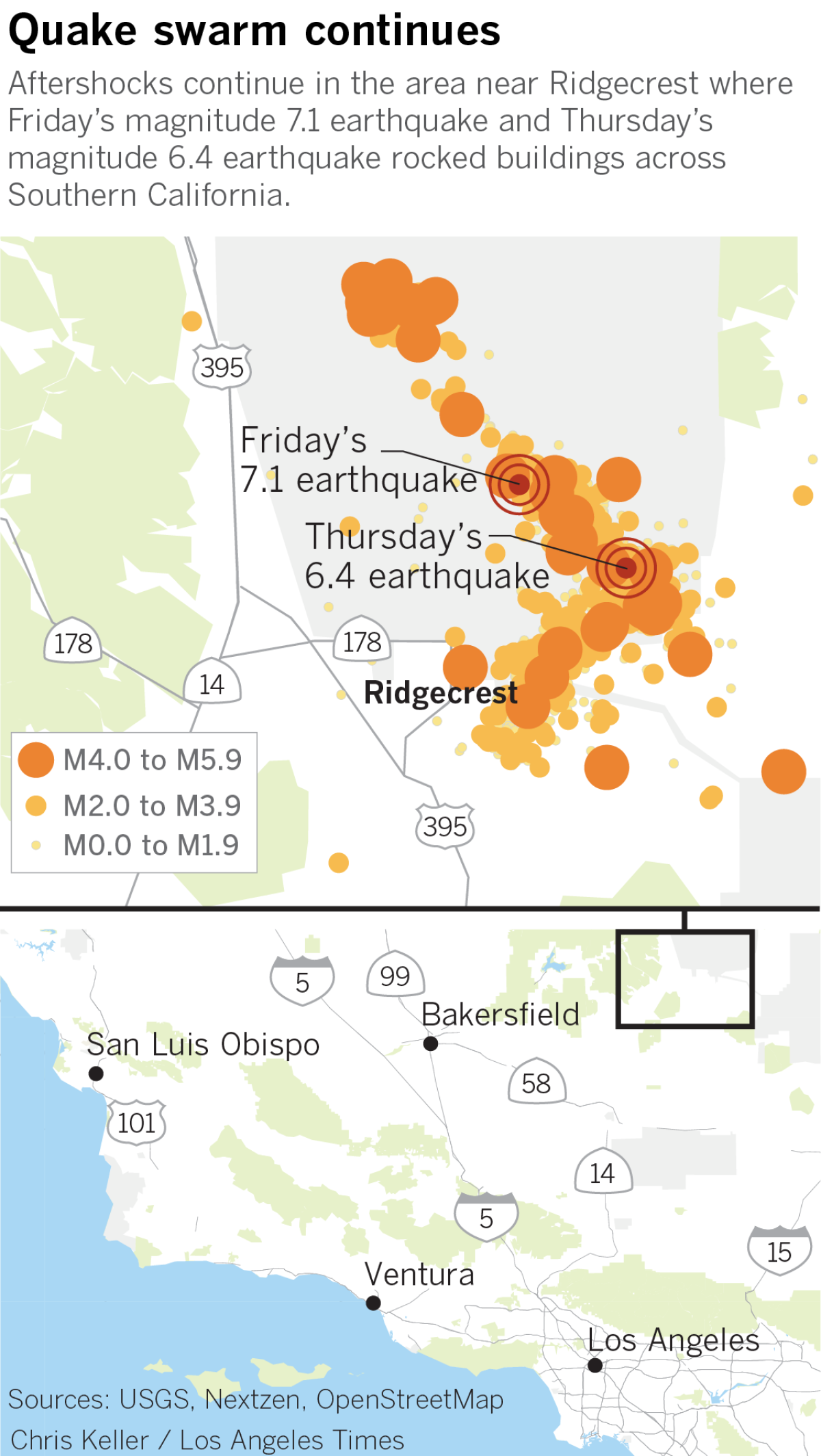
Lori Churchill, her friend Michelle Hewitt and neighbor James Combs were sitting under a tarp in a courtyard at the Trousdale Estates, a mobile home park in Ridgecrest, when Gov. Gavin Newsom arrived Saturday afternoon with other state and local officials as part of a tour of earthquake damage in the community.
The park was hard hit by the quake, and several mobile homes had red tags, marking them as uninhabitable. The gas had been turned off because of leaks. And most residents, even those whose homes were not red-tagged, had slept in their cars the night before, they told the governor.
“It’s scary and everybody is really panicky,” said Hewitt, who was visiting Churchill when the first large quake hit and had stayed to help her friend.
When Newsom asked whether they had water, Hewitt replied that they did. But she worried about whether it was safe.
“I don’t know if we can trust the water,” she said.
Newsom asked where they would sleep that night.
“I don’t know,” Churchill said.
Newsom mentioned the Red Cross shelter nearby. And later, at Combs’ suggestion, the governor took selfies with each of them.
“Good luck, tonight,” Newsom said before he left.
After he was gone, Churchill explained that she was wearing the same blue nightgown that she had worn for two days — and that she had not slept more than “an hour here, an hour there” in that time. Her mobile home had not been red-tagged, but there was damage inside. The frequent aftershocks and the looming possibility of another big quake had her terrified.
“It hasn’t come off its foundation but if another one hits I don’t know what’s going to happen,” Churchill said. “I’m walking around kind of like a zombie,” she said.
She had not gone to the Red Cross shelter because she worried just as much about that shelter collapsing in a big earthquake as her own home.
“They’re waiting for this other earthquake to come,” she said. “If it comes, what does it matter if you’re at the Red Cross?”
Asked what it meant to her that the governor had stopped by, she said: “It was nice, but I don’t have any illusions about anything. It was an earthquake. It’s not something he can control.”
Hewitt, her friend, said that even if the governor couldn’t prevent another quake, she hoped he would get them help.
“I hope he feels what he saw here,” Hewitt said. “We need hope here.”
The Friday quake occurred on the same fault system as Thursday’s 6.4 temblor, with a depth of more than 8 miles, Hauksson said. The fault line is now about 30 miles long, he said.
The earthquake ruptured about 20 miles to the north of the July Fourth 6.4 earthquake. If the energy from the earthquakes were heading south, he said, it would be “more likely to have damage to Palmdale or closer to downtown L.A.”
Given the size of the previous earthquakes, it’s likely that Los Angeles will still feel some shaking over the next week, Hauksson said.
There is about a 20% chance of one or two magnitude 6.0 earthquake or bigger over the next week, he said.
Caltech seismologist Lucy Jones said she could not recall a pattern of earthquakes in California where a 6.4 foreshock was followed by a 7.1 event, only to be followed by an even bigger quake. But that doesn’t mean it can’t happen, she cautioned.
“It is clearly a very energetic sequence, so there’s no reason to think we can’t have more large earthquakes,” she said.
Newsom declared a state of emergency for San Bernardino County on Saturday morning, following a similar declaration for Kern County on July 4.
The back-to-back quakes disrupted the activities and plans of many throughout the region.
The First Baptist Church of Searles Valley in Trona was planning to hold a 65th anniversary celebration on Sunday, complete with barbecue and a guest sermon. But Pastor Larry Cox put those plans on hold — most of his congregation has left in the wake of the duo of earthquakes that caused heavy damage in the tiny town on the edge of Death Valley.
“They just went through two major quakes, so they’re saying ‘We’re going to be with family for a few days,’” said Cox, who has led First Baptist for 16 years.
There was no structural damage to First Baptist’s sanctuary or fellowship hall. But they are nevertheless wrecked. The sanctuary suffered broken glass, broken water pipes, and “everything came off the shelves,” the pastor said. “The church office was a mess.”
Even worse was the fellowship hall: the roof caved in, and it suffered water damage. Cracks are all over its parking lot. The total damage is estimated right now at $3,000.
“Lots of damage to the church building,” officials wrote on Facebook Saturday, complete with a photo of the damage wrought upon their buildings. “But we thank the Lord that everyone is all right. We were thinking today how grateful we are that the first earthquake happened on the Fourth of July so families were home together. God is so full of Grace.”
What remains of First Baptist’s congregation has focused on helping the rest of Trona. Cox says men in the church are going door to door to check in on “widows and shut-ins.”
On Facebook, the church is letting residents know it has water available. They’ve already given out 300 cases of water, and have 300 more to give — and Cox expected more residents to come later Saturday night.
“It’s hot today,” said the Simi Valley native (temperatures reached 102 degrees in the area Saturday). “People aren’t really going out right now. But later on, they’ll grab their water, and go back inside to their homes.”
Cox still plans to hold an anniversary service for First Baptist on Sunday morning, although services will be abbreviated.
“I want to talk about comfort in times of fear,” he says, regarding his planned sermon. “What do you do when you have fear in your heart?” He said he usually has 100 people for a typical Sunday morning service; he expects about 30.
When The Big One hits, will you be ready? Take our quiz to be sure »
Moments before Friday night’s earthquake hit, a singer at an open mic night at Ridgecrest’s USO launched into the rock-and-roll classic “Whole Lotta Shakin’ Goin’ On.”
Outside the building, Julie Pryor, 74, told the singer that his special effects were great. He responded: “I’m not playing that song anymore.”
In Los Angeles, the shaking interrupted a lively night at restaurants, theaters and museums. At Dodger Stadium, the earthquake struck at the bottom of the fourth inning, as Enrique Hernandez faced San Diego Padres pitcher Eric Lauer. Neither noticed the shaking.
“How are they continuing to play baseball?” Dodgers play-by-play announcer Joe Davis wondered. As the shaking tapered off, Dodger Stadium organist Dieter Ruehle started playing Carole King’s 1971 classic, “I Feel the Earth Move.”
At the Ahmanson Theatre, the play “Indecent” was underway when stage lights began to sway and words projected onto the set blurred. Then the cast was ordered off the set.
The cast remained off stage for about 15 minutes. At one point, a voice from behind the stage said: “Forgive us, we’re from New York,” which drew laughter. When the actors returned, someone yelled out: “Welcome to California!”
Times staff writers Gustavo Arellano, Phil Willon, Alexa Díaz, Anita Chabria, Seema Mehta, Julia Wick, Ron-Gong Lin II, Deborah Netburn, Piper McDaniel, Jorge Castillo, Rosanna Xia, Ruben Vives, Sonali Kohli and Alejandra Reyes-Velarde contributed to this report.
UPDATES:
Noon: This story has been updated with assessments of future earthquake risk and damage reports.
2:15 p.m.: This story has been updated with additional information.
More to Read
Start your day right
Sign up for Essential California for news, features and recommendations from the L.A. Times and beyond in your inbox six days a week.
You may occasionally receive promotional content from the Los Angeles Times.
